
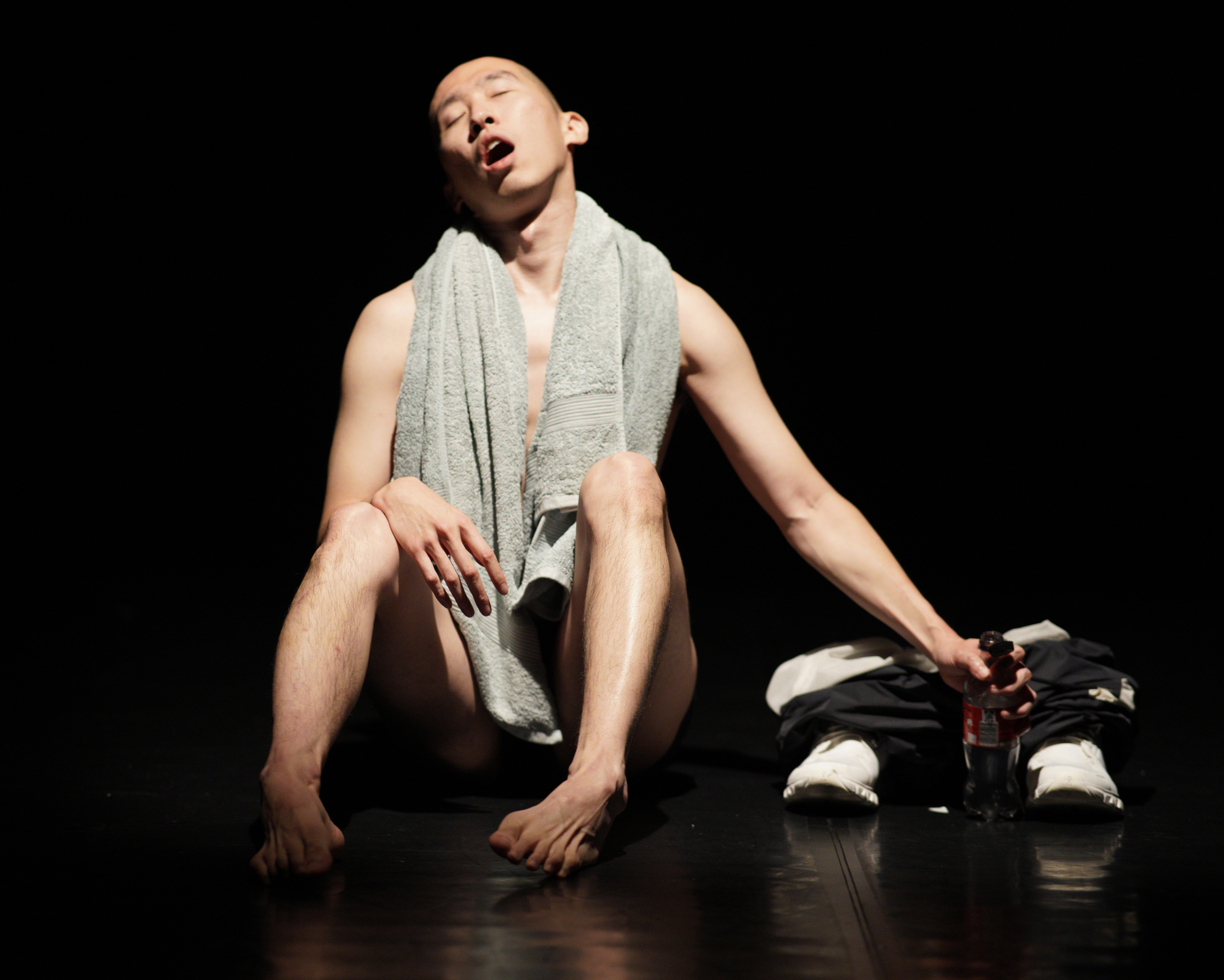
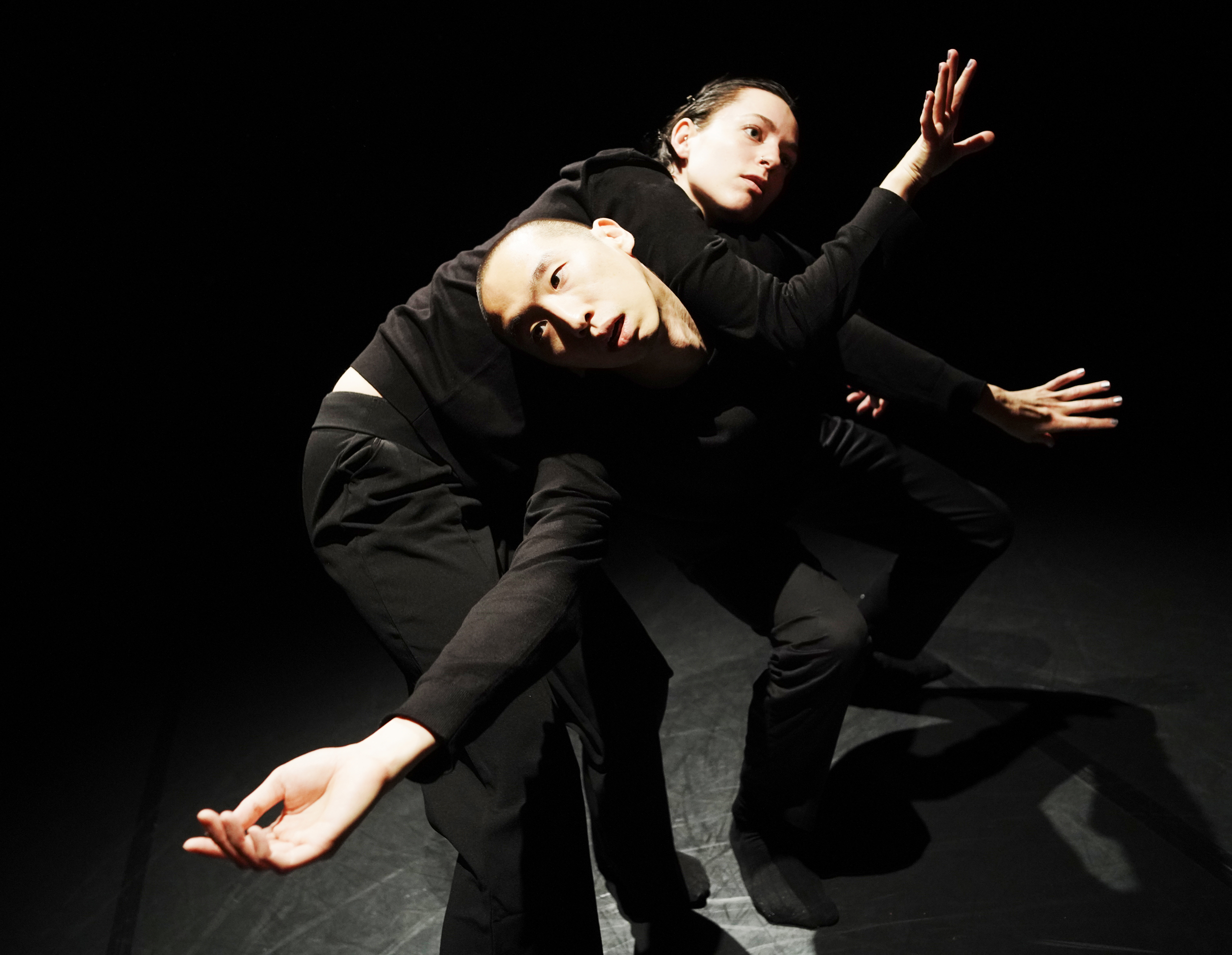


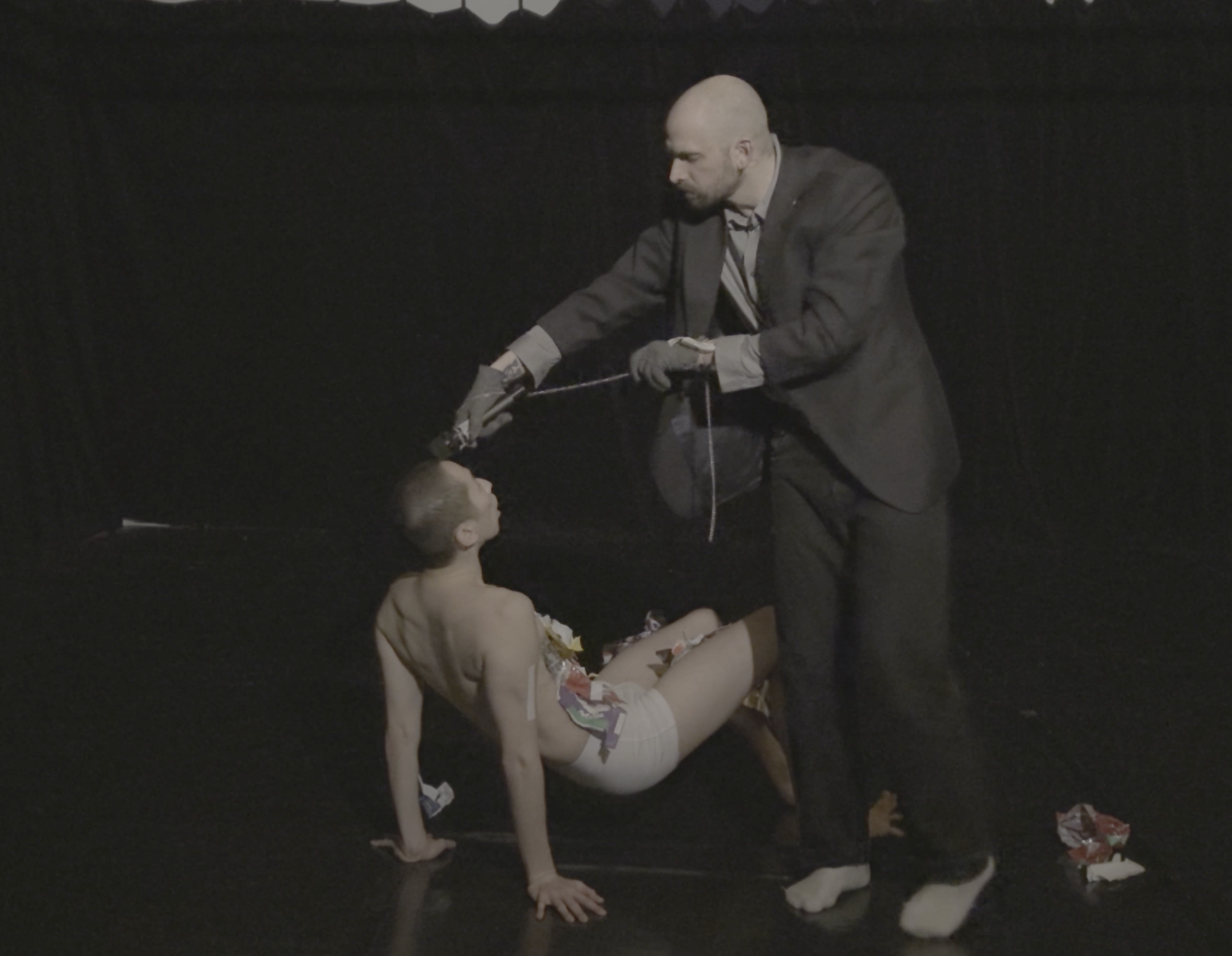

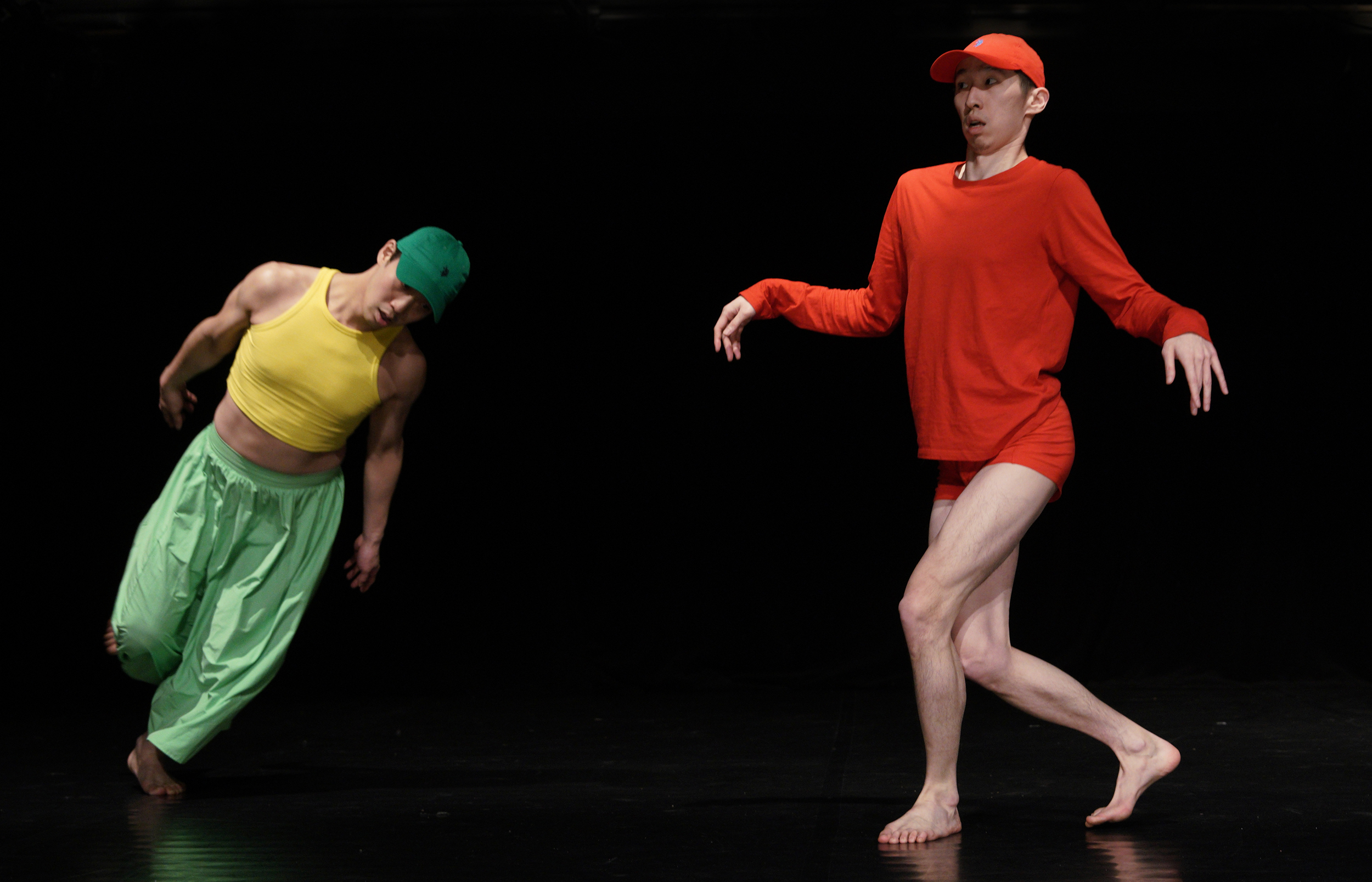

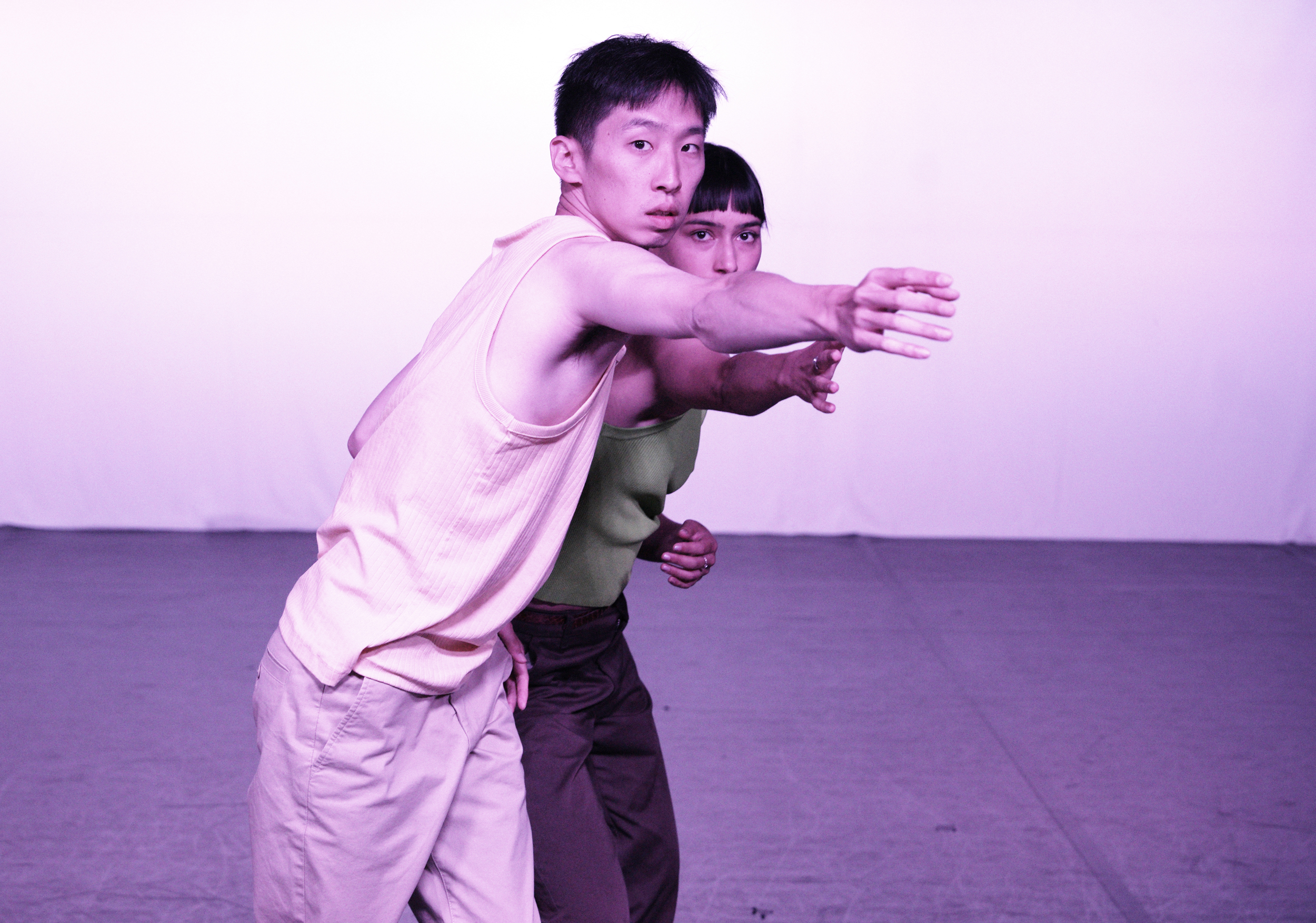
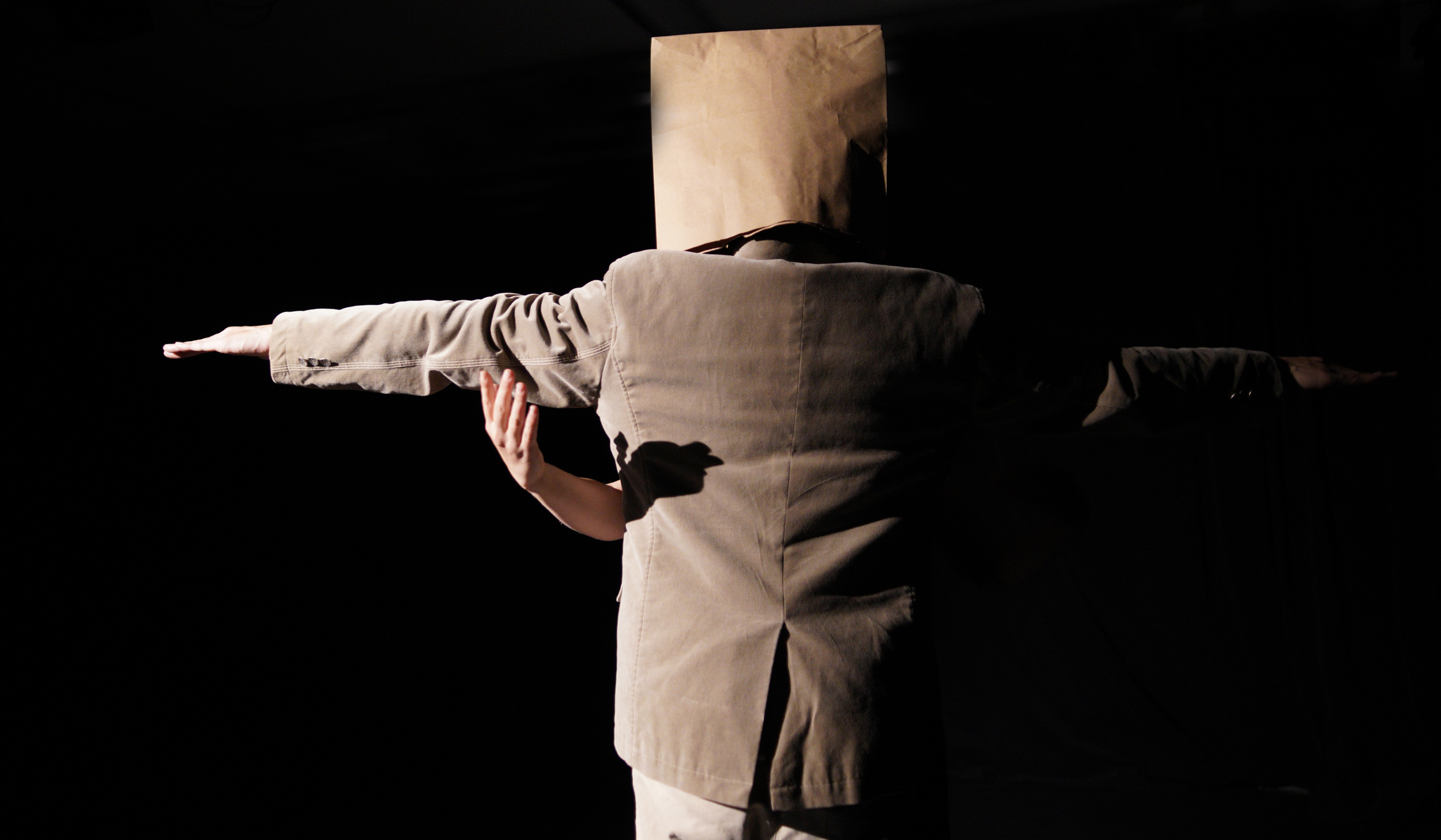

















A duet about power, violence, and silence told through sound and movement.
One figure amplifies the sounds of consumption eating, dragging, breathing while the other receives what remains: noises, objects, pressure.
The piece reflects colonial structures through metaphor: Who is heard? Who is silenced? Who controls the narrative? The performers' interaction reveals the tension between voice and voicelessness, dominance and survival an echo of the historical and contemporary weight of colonial reality.
Choreographer: Seung Hwan Lee
Performer: Seung Hwan Lee, Tea Zugec
A solo unfolding like an inner monologue not spoken, but expressed physically.
Soliloquy reflects loneliness, inner conflicts, and the quiet search for meaning within oneself.
Without words, the body becomes the voice traversing layers of thoughts, feelings, and memories. Movements emerge and dissolve like fleeting reflections.
The piece does not seek resolution; instead, it creates space for vulnerability and presence in simply existing.
Choreographer & Performer: Seung Hwan Lee
Residency: Art Space stift Millstaat
Venue: Zukunft Tanzt festival in Gallus Theater Frankfurt
What does it mean for a body to be political? This piece investigates how political realities are not only spoken about but also felt, lived, and carried by the body in posture, tension, and breath.
Without an explicit narrative, Politicalness explores the subtle, often unconscious ways in which political awareness becomes embodied.
The work deliberately avoids slogans, drawing attention instead to presence and physical nuance as forms of resistance, critique, and reflection.

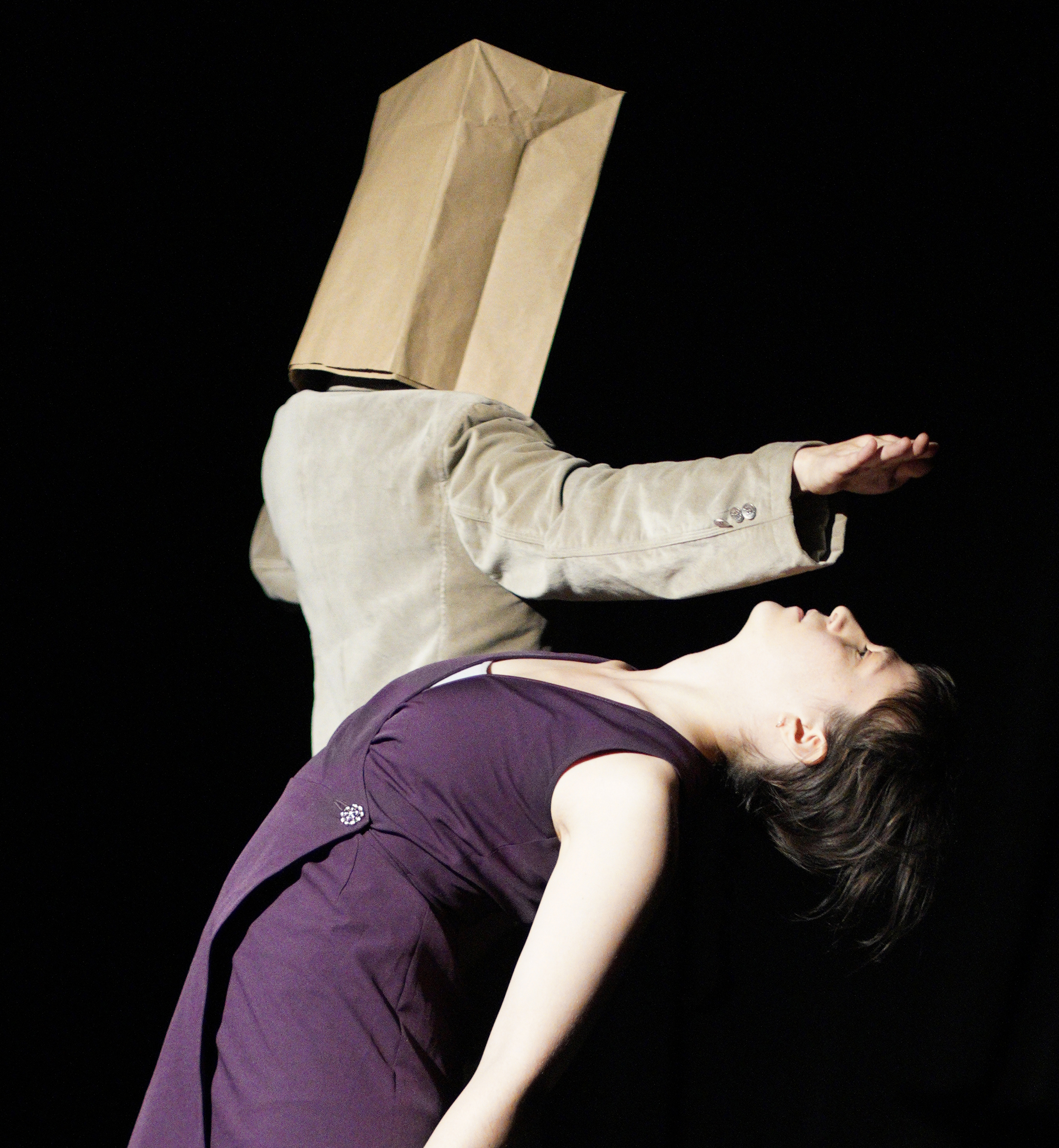

Choreographer: Seung Hwan Lee
Performer: Seung Hwan Lee, Bar Gonen
Music: Seung Hwan Lee
Venue: Theater Felina Mannheim
A solo piece exploring the aftereffects of trauma and the body's capacity to store memory. The work is based on the concept of the body as a living archive a place where emotions, memories, and disturbances are recorded beyond words.
Through fragile and raw movement, the performance investigates how personal and collective trauma manifests itself in breath, posture, rhythm, and silence.
The date 12.09.2017 remains intentionally undefined a symbol of lived experience, unresolved memory, and those formative moments that shape us but evade linguistic explanation.
Choreographer & Performer: Seung Hwan Lee
Voice: Magdalena Meier
Venue: Raw & Polished festival in Tanzentrale Nürnberg, Heidelberg Tanzbiennale festival in Unterwegs Theater
"Who do you want to be?" This question is not easy to answer. I've asked myself the same many times often without a clear response. But for me, the person I ultimately want to be is my "true self."
This journey is about discovering and embracing one's inner value and beauty rather than conforming to external expectations or societal roles. Compromise and adaptation can become routine, but in doing so, there's a risk of losing one's essence.
The piece explores these kinds of questions and inner dilemmas. It tells the story of a person who tries to live up to the image others have of them and loses themselves along the way.
"Looking For Someone To Be" is a reflection on our inner desires and human values. Through the solo journey of one figure on stage, the piece invites us to rediscover the beauty and meaning of self-acceptance.

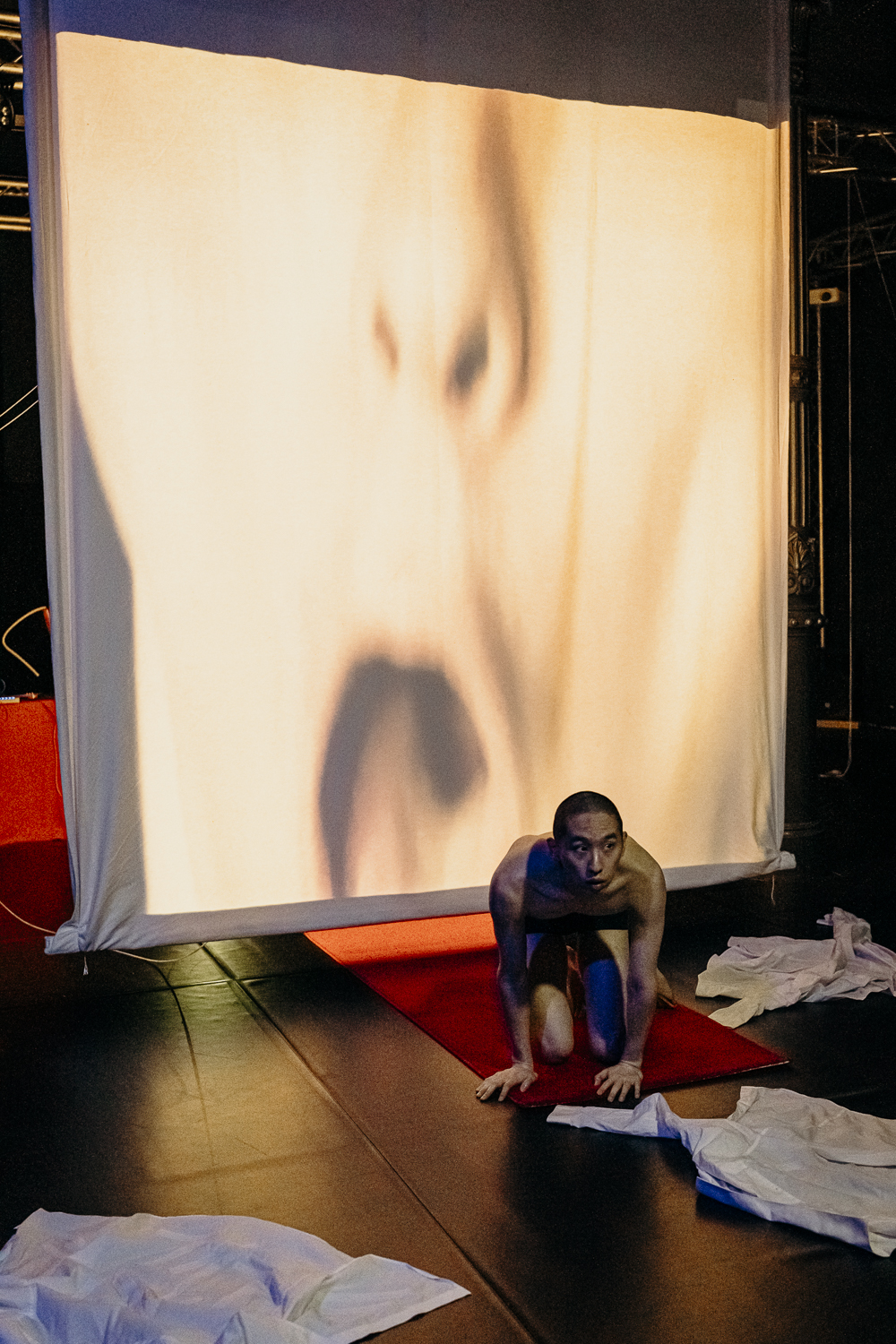

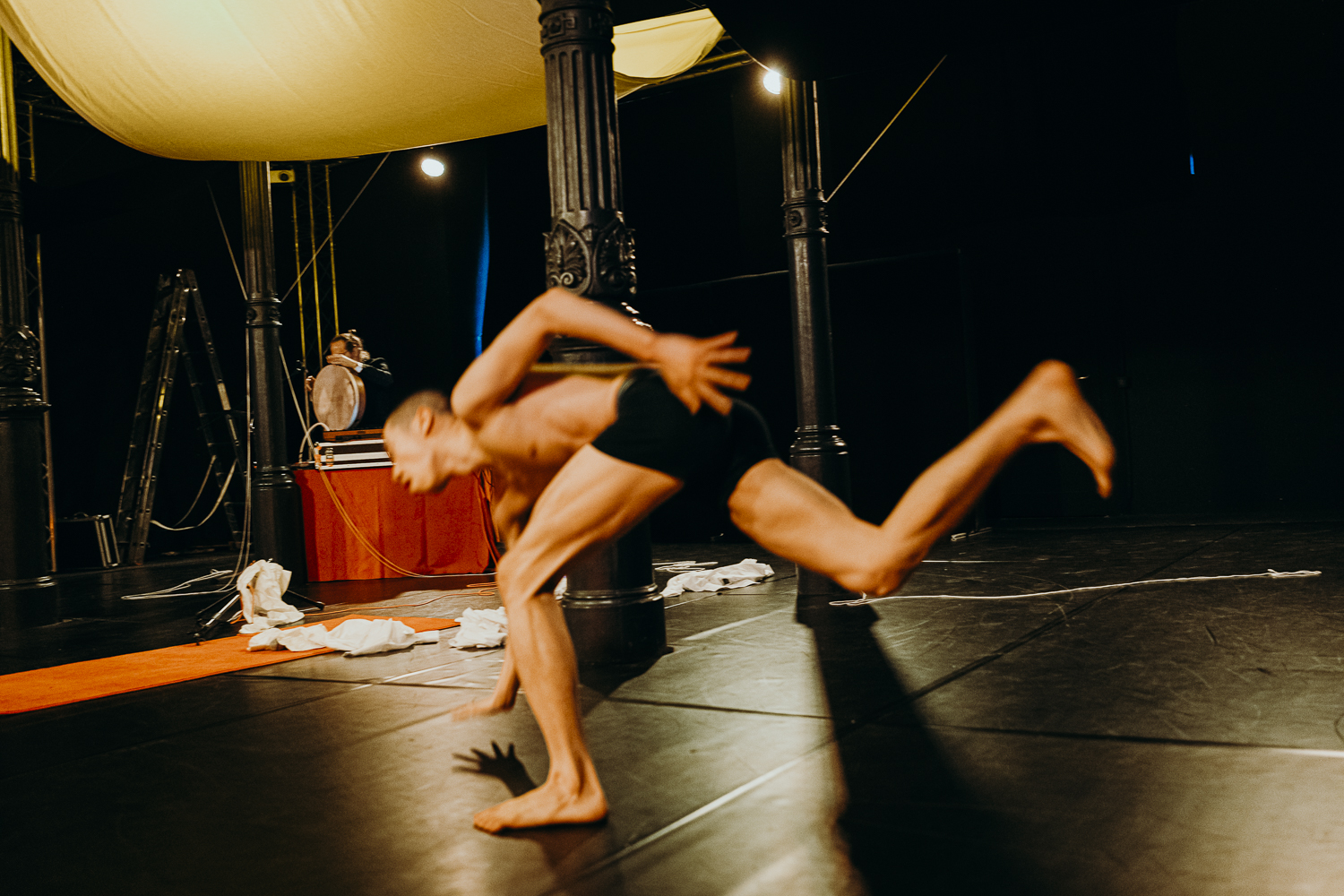


Choreographer: Seung Hwan Lee
Performer: Seung Hwan Lee & Peter Hinz
Music: Peter Hinz
Outside Eyes: Éric Trottier
Residency & Venue: LAB Mannheim
Is the human also an animal or has instinct long been overridden by consumption, intellect, and cultural constructs?
Can we reconnect with the animal within us, and with the wilderness? ANIBODY explores these questions through movement and the body. It challenges us to consider whether our senses can help us rediscover instinctive behavior and whether this instinct, often suppressed by modern life, might offer new perspectives on survival in times of climate crisis, war, and cultural alienation.
The theme of survival runs throughout the piece from the survival of identities and ethnic groups during displacement, to the evolutionary adaptability of animals over millennia.
The piece asks whether a return to instinct in times of crisis is not a regression, but rather a reconnection to something original — a bodily intelligence that may not only secure survival, but also enable a new form of being.

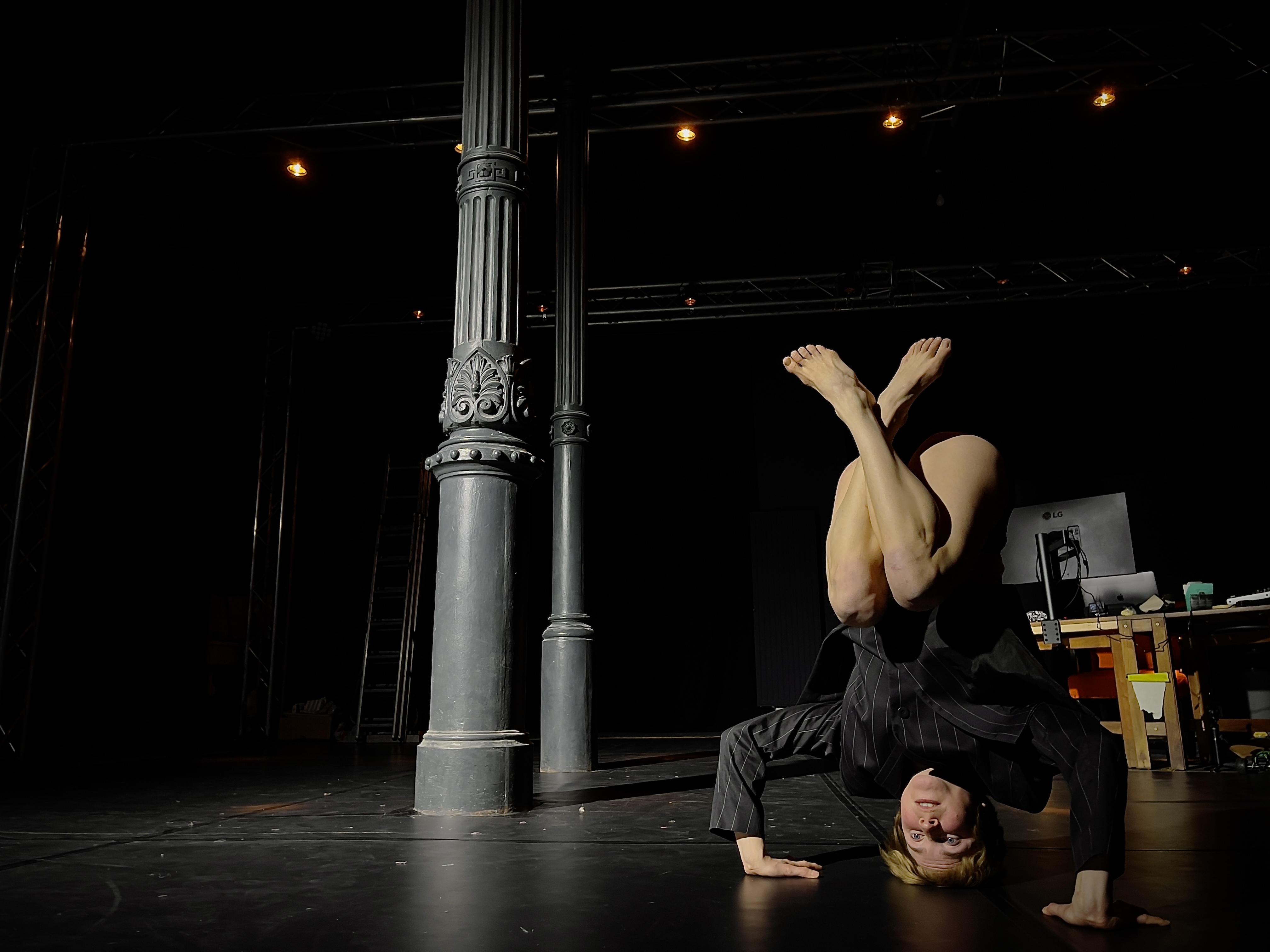
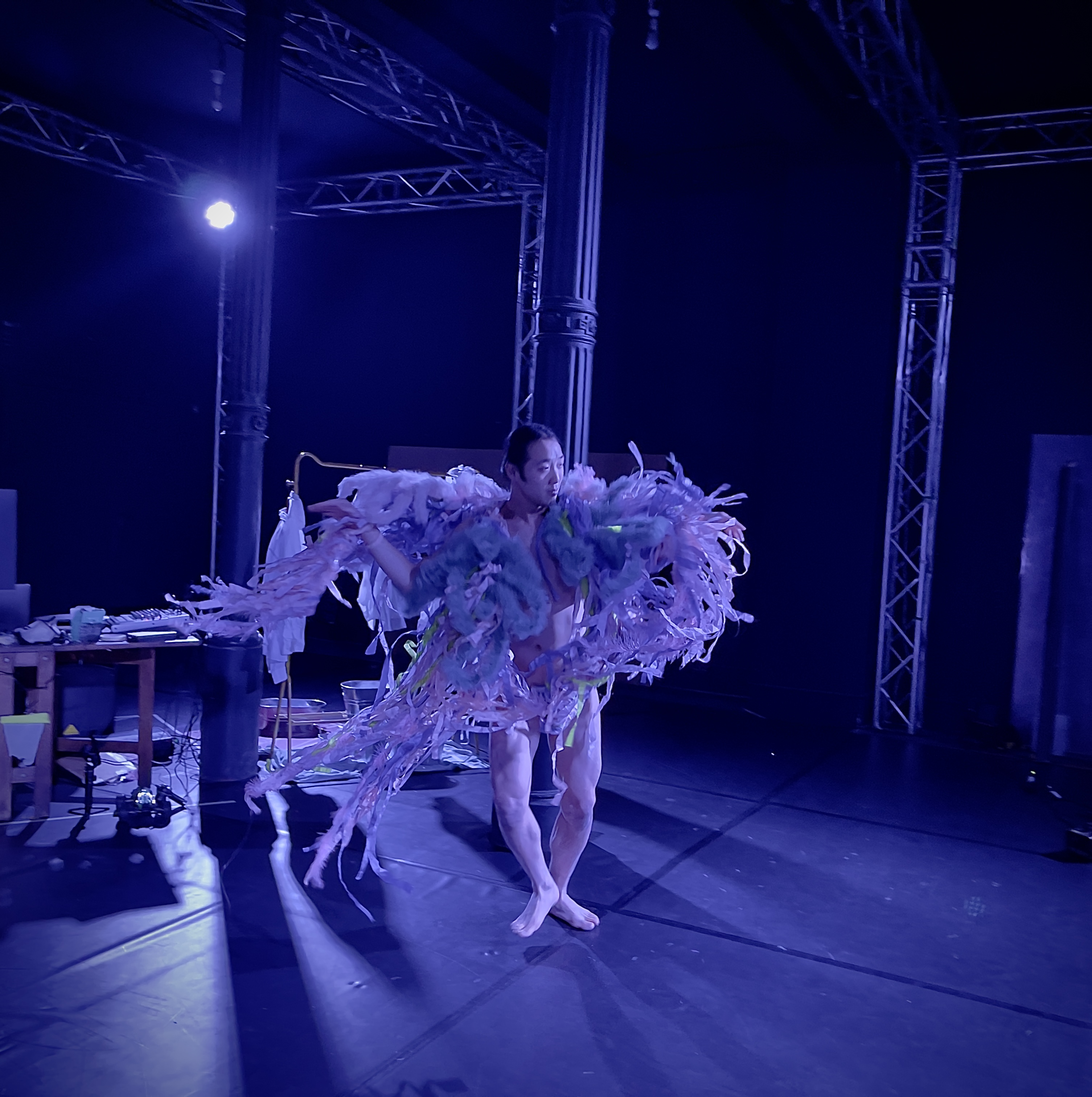
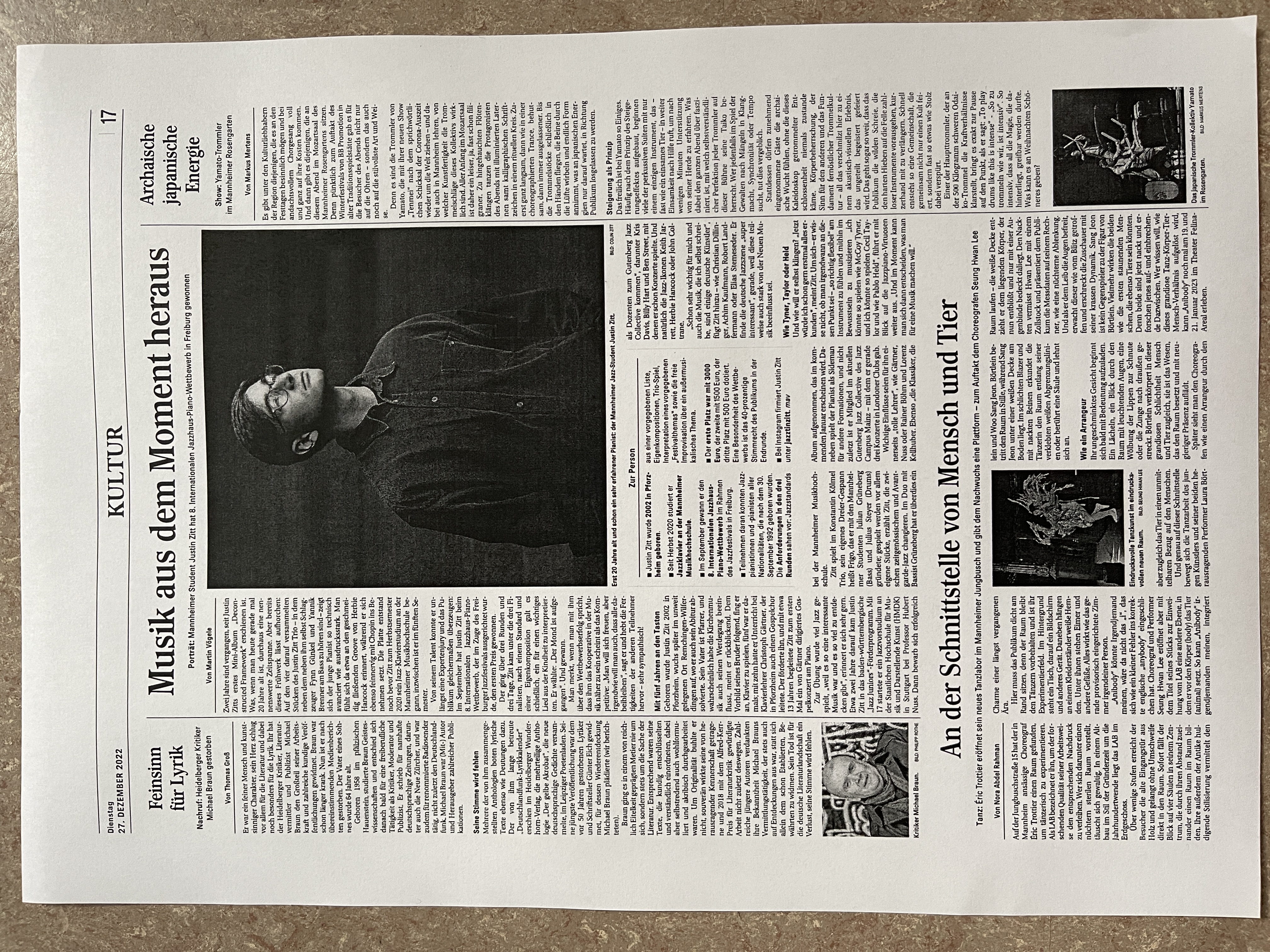
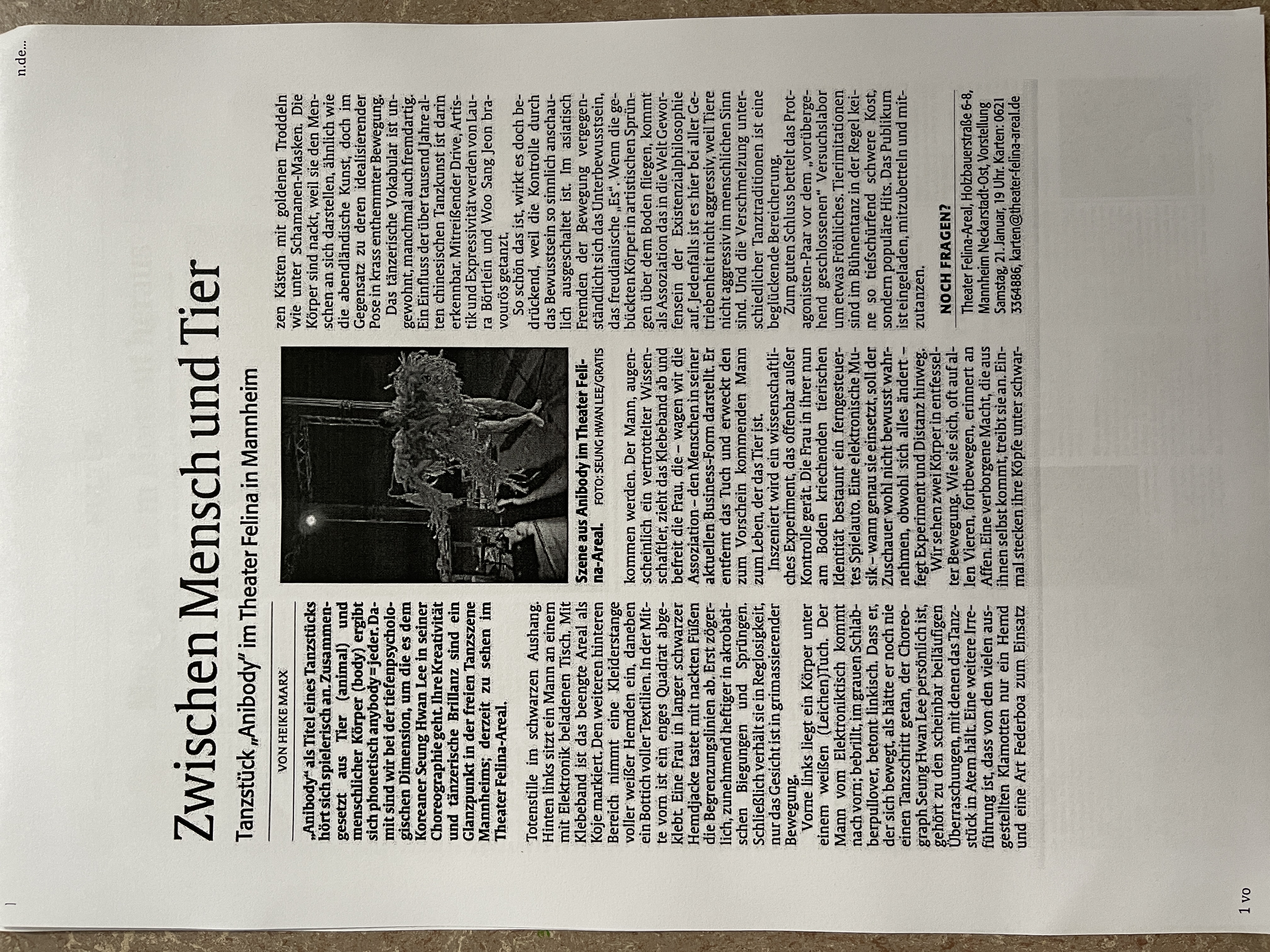
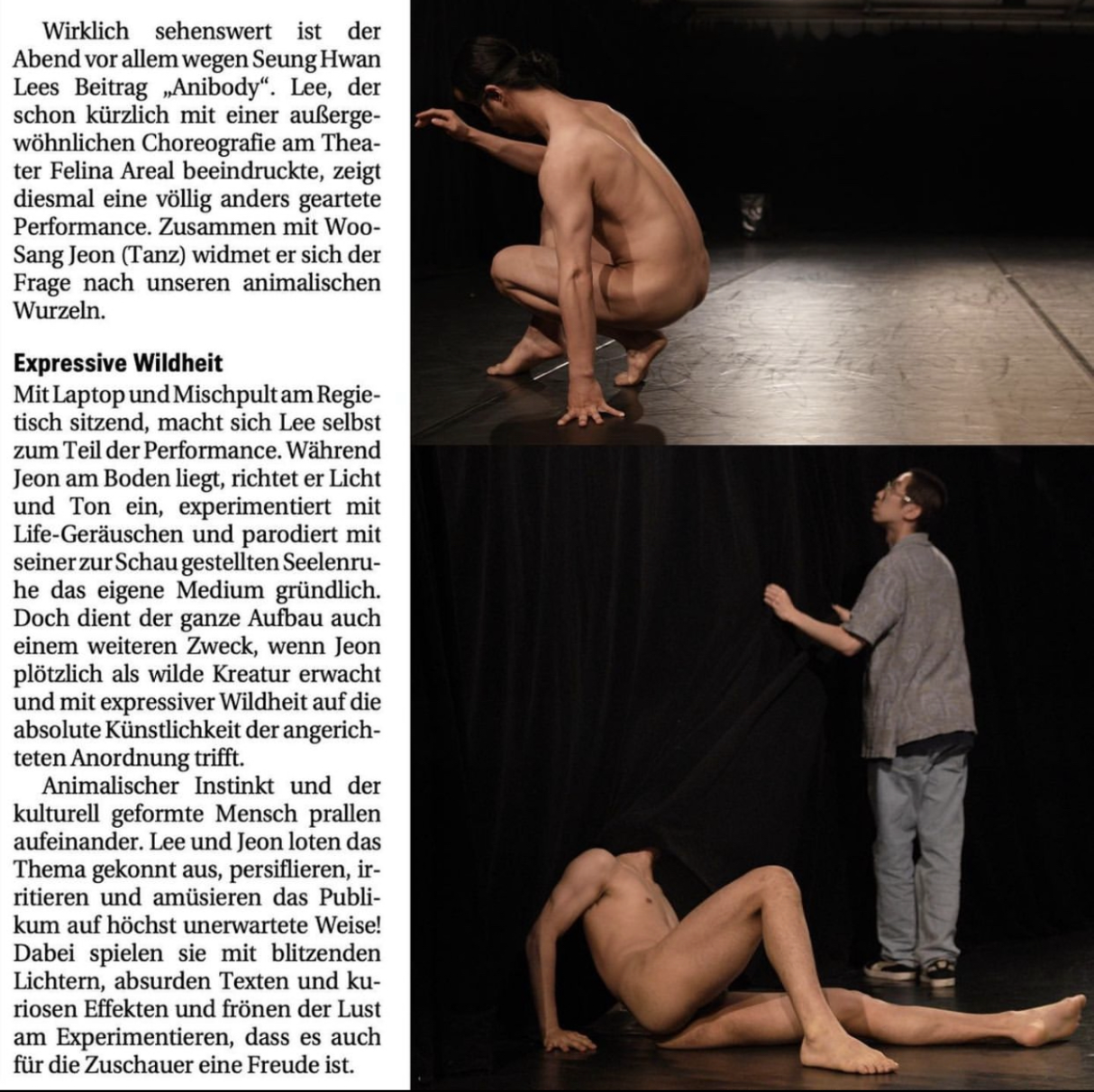
Choreographer: Seung Hwan Lee
Performer: Seung Hwan Lee, Laura Börtlein, Woo Sang Jeon
Residency: Heidelberg Choreography Centrum
Venue: Unterwegs Theater, LAB Mannheim, Theater Felina
Support: Kulture Amt Mannheim, LAFT BW
Liquid Angles is a duet that explores how two different movement languages can communicate and learn from each other. The project brings together a contemporary dancer and an urban dancer, each shaped by distinct training methods and aesthetics.
Through a series of exchange tasks, the dancers learn, translate, and adapt each other's phrases, finding a space between flow and precision.
The work also focuses on spatial perception. The audience is imagined on four sides, and the choreography moves in all directions. The duet shifts between two modes of focus — moments where the dancers face the audience and moments where they turn toward each other in dialogue.
Without words or emotion, the piece studies movement as a form of communication. Liquid Angles creates a physical conversation where differences coexist, overlap, and form a new shared language.
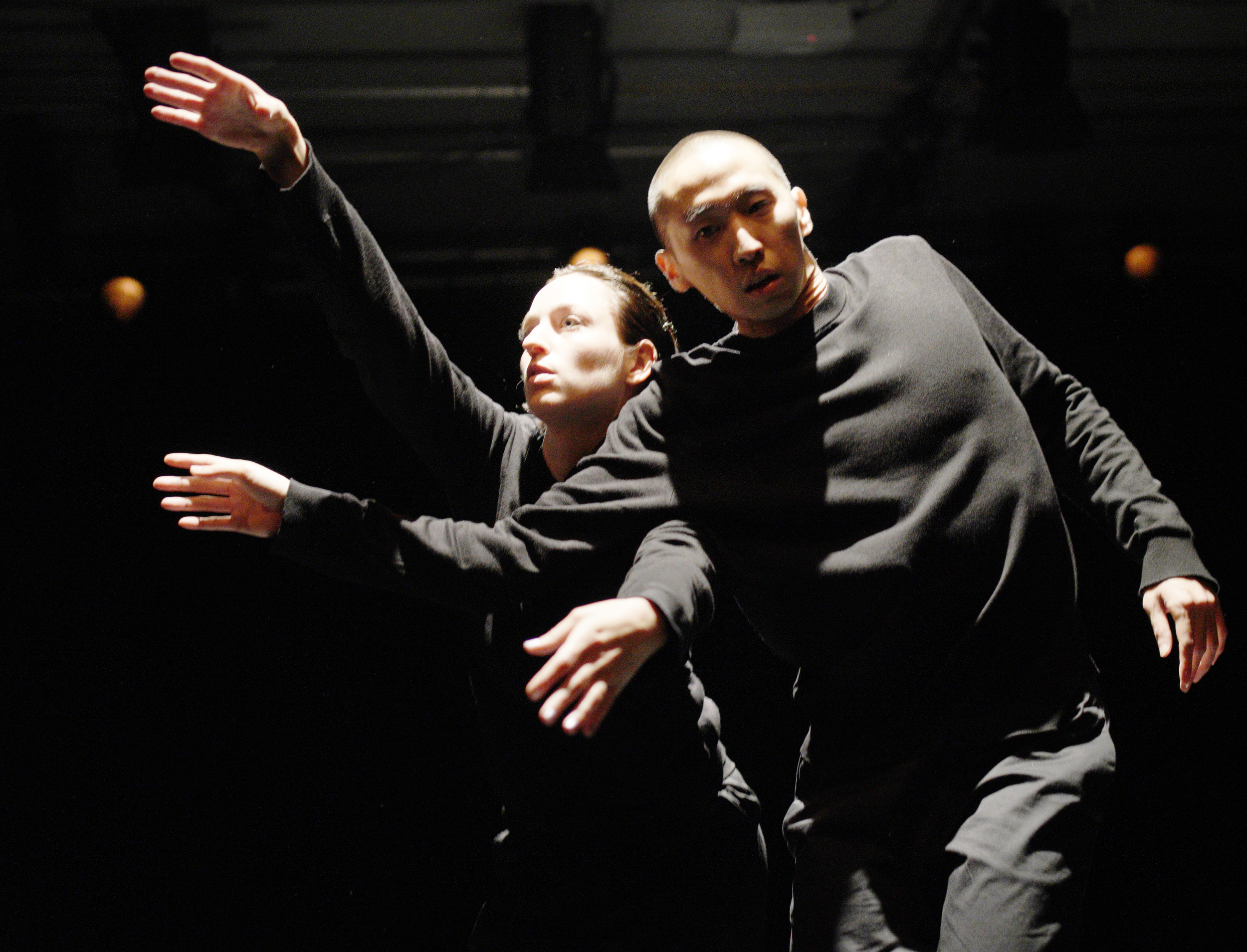
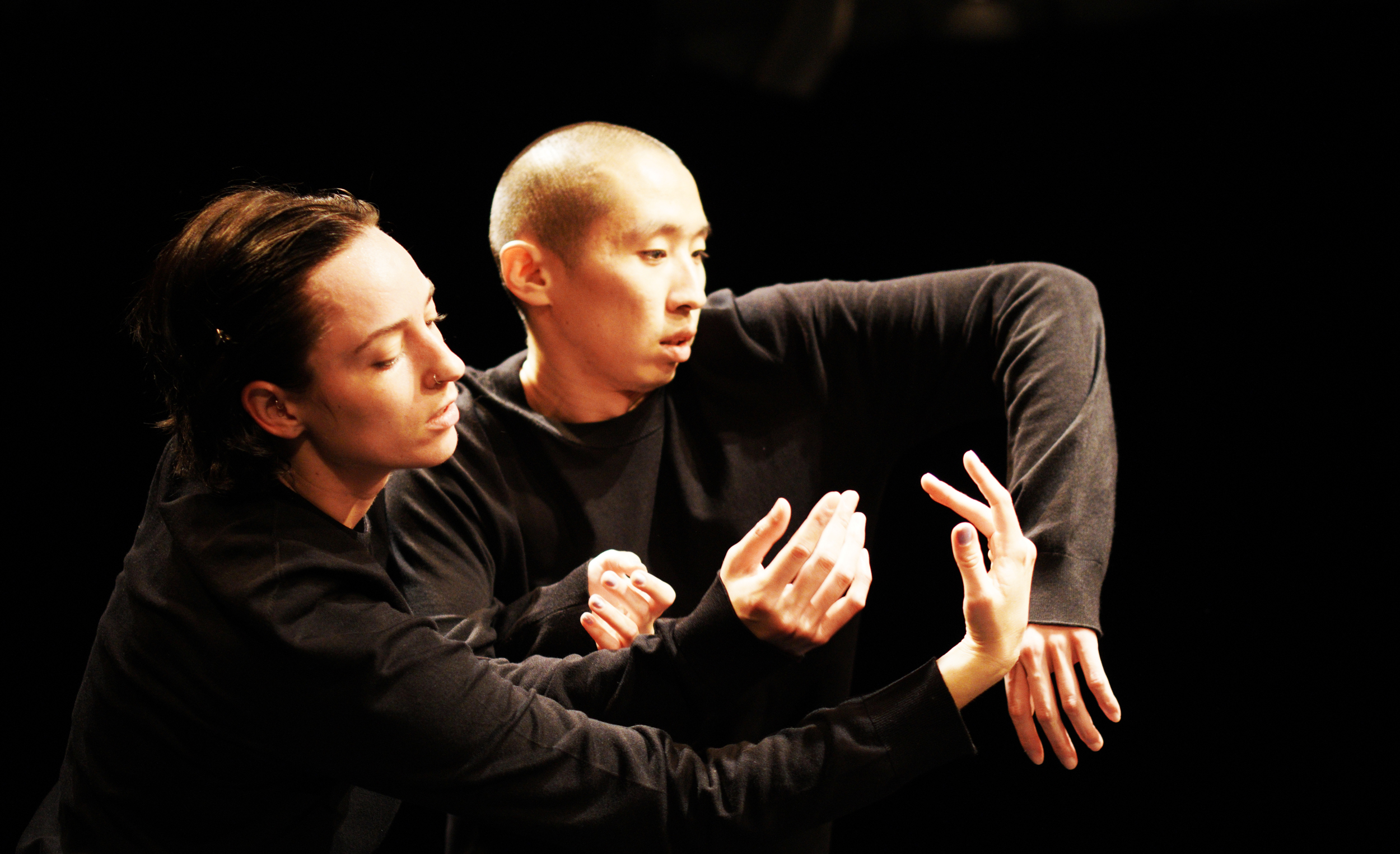
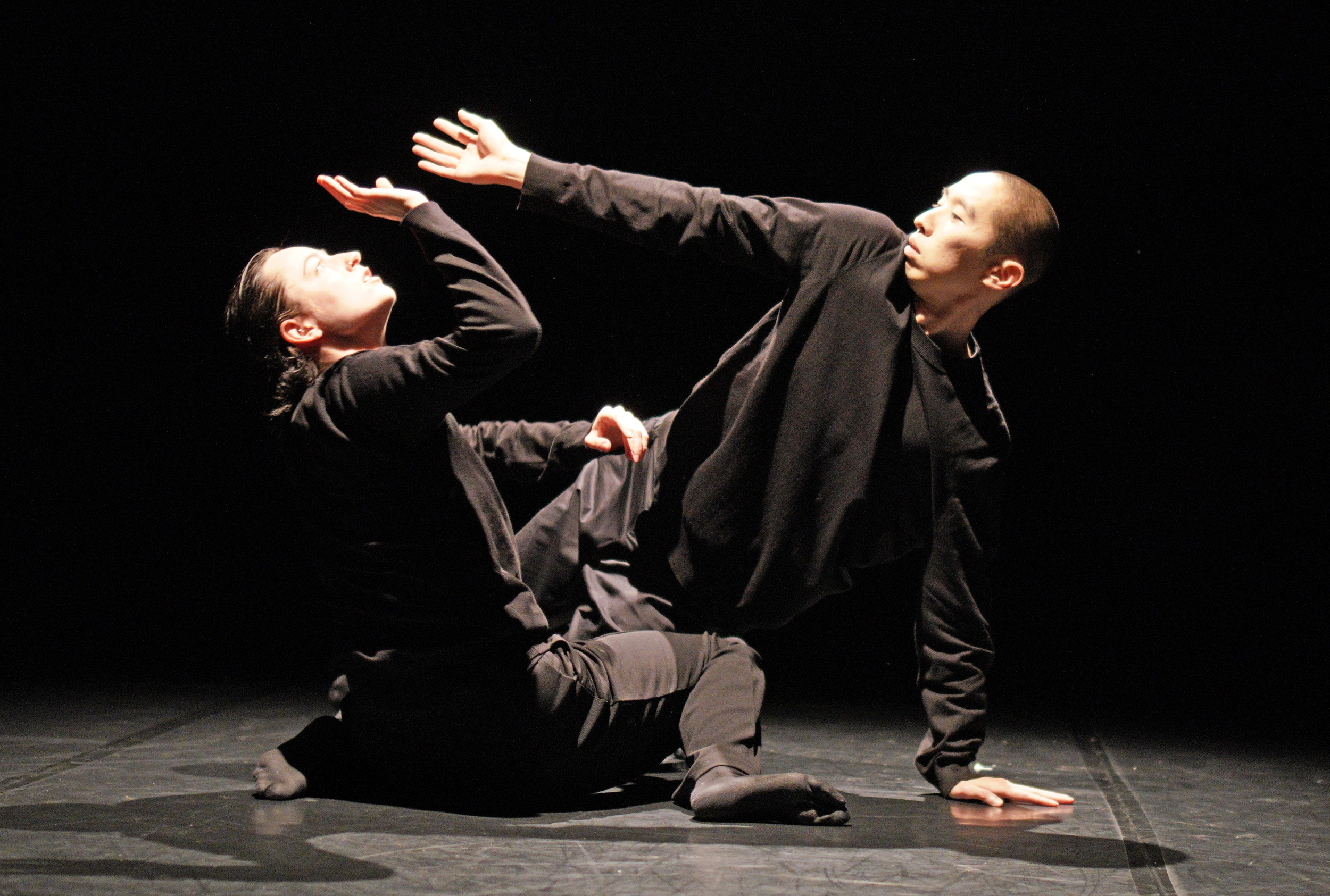

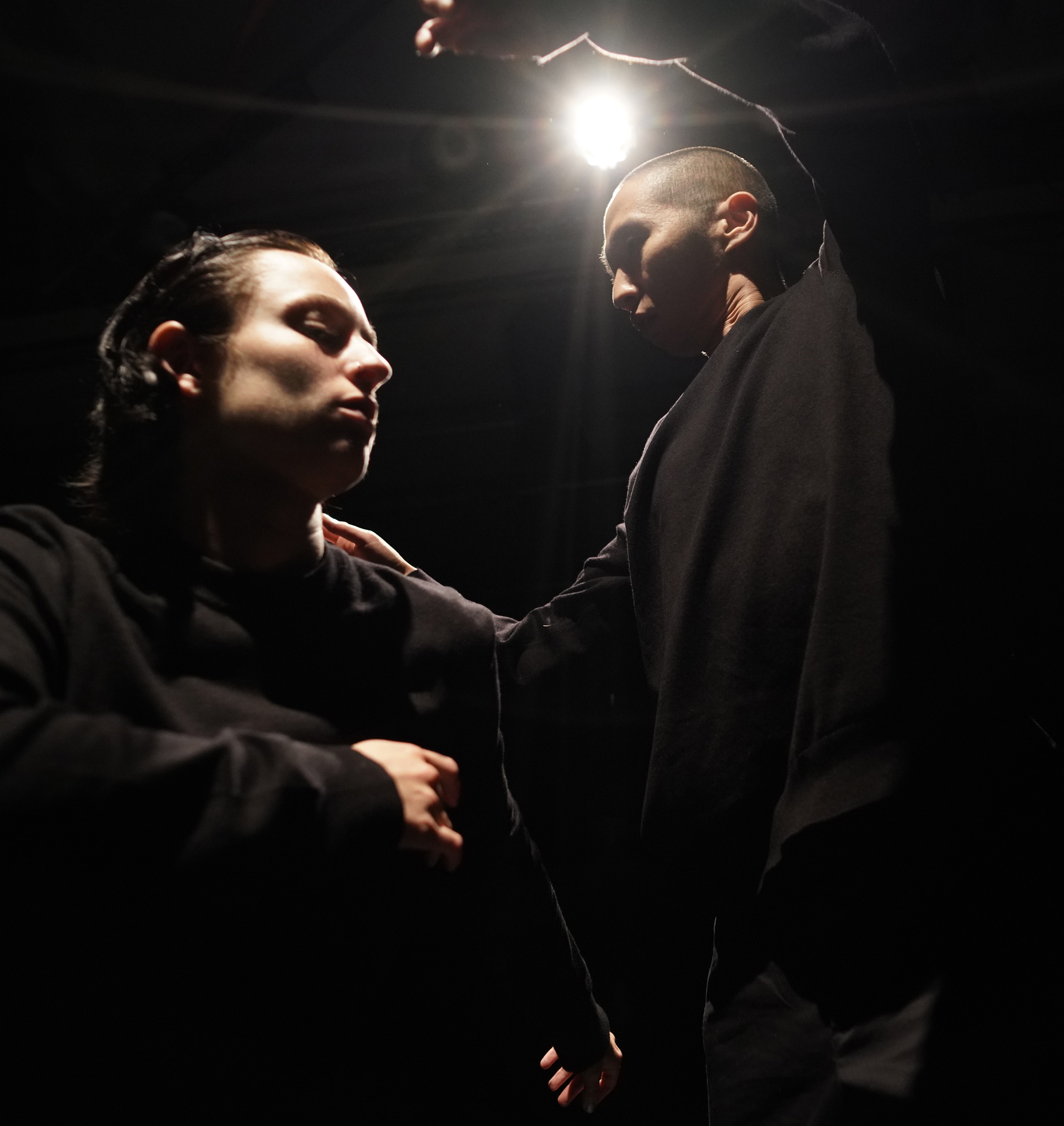
Choreographer: Seung Hwan Lee
Performer: Seung Hwan Lee, Joelina Rietsche
Music: Opal - Byetone
Venue: Felina Theater Mannheim
In this work, the dancer embodies the cockroach — a creature that thrives in the shadows, surviving where others cannot. Through distorted movements, sudden stillness, and unpredictable bursts of energy, the performance explores resilience, adaptability, and the unsettling coexistence of disgust and admiration.
The cockroach becomes a metaphor for the parts of humanity we try to suppress: our raw instinct to survive, our ability to adapt to hostile environments, and the stubborn persistence of life itself. Moving between human and insect form, the piece blurs the line between repulsion and fascination, confronting the audience with the uncomfortable truth that we are not so different from the creatures we try to eliminate.
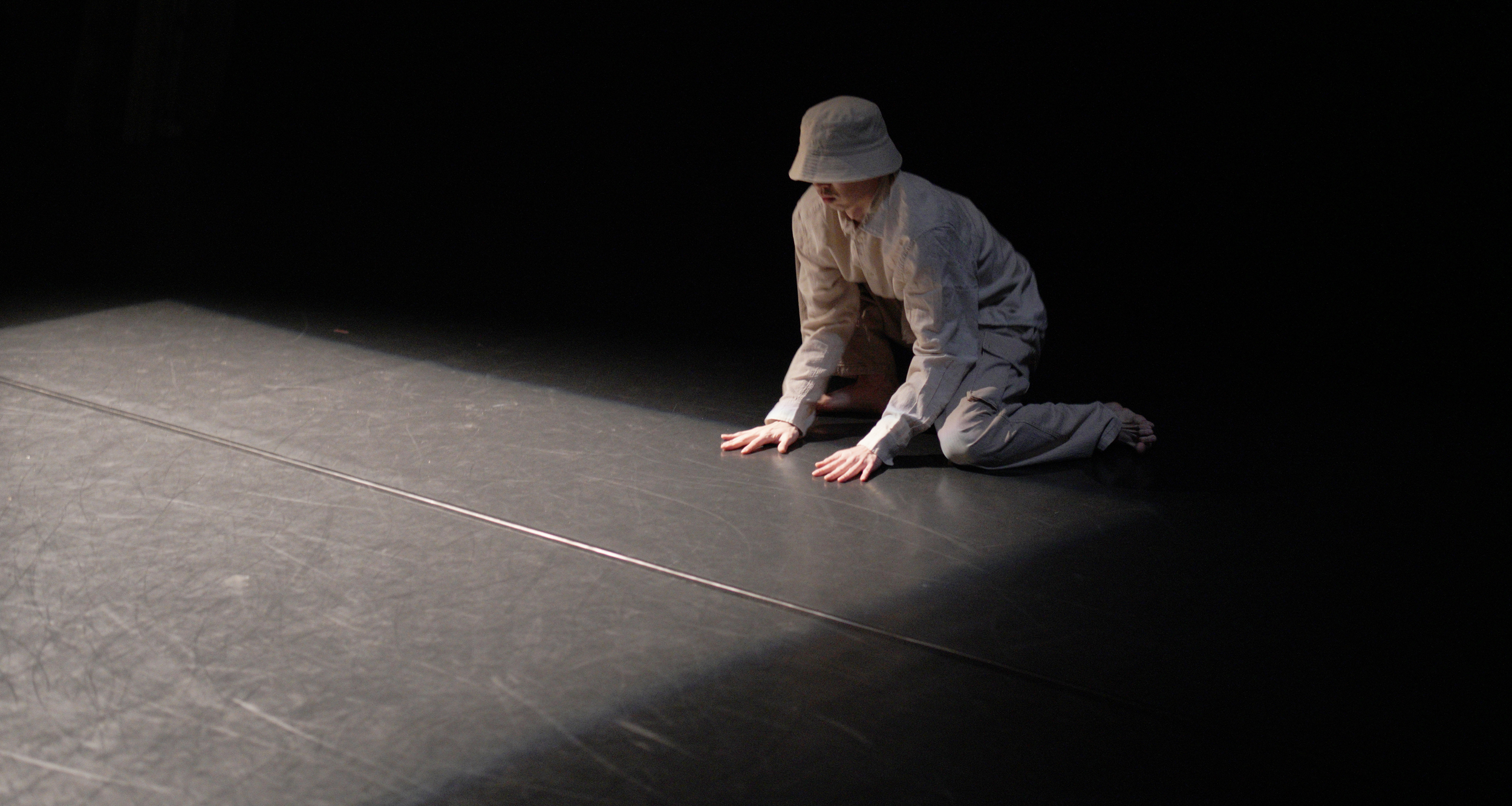
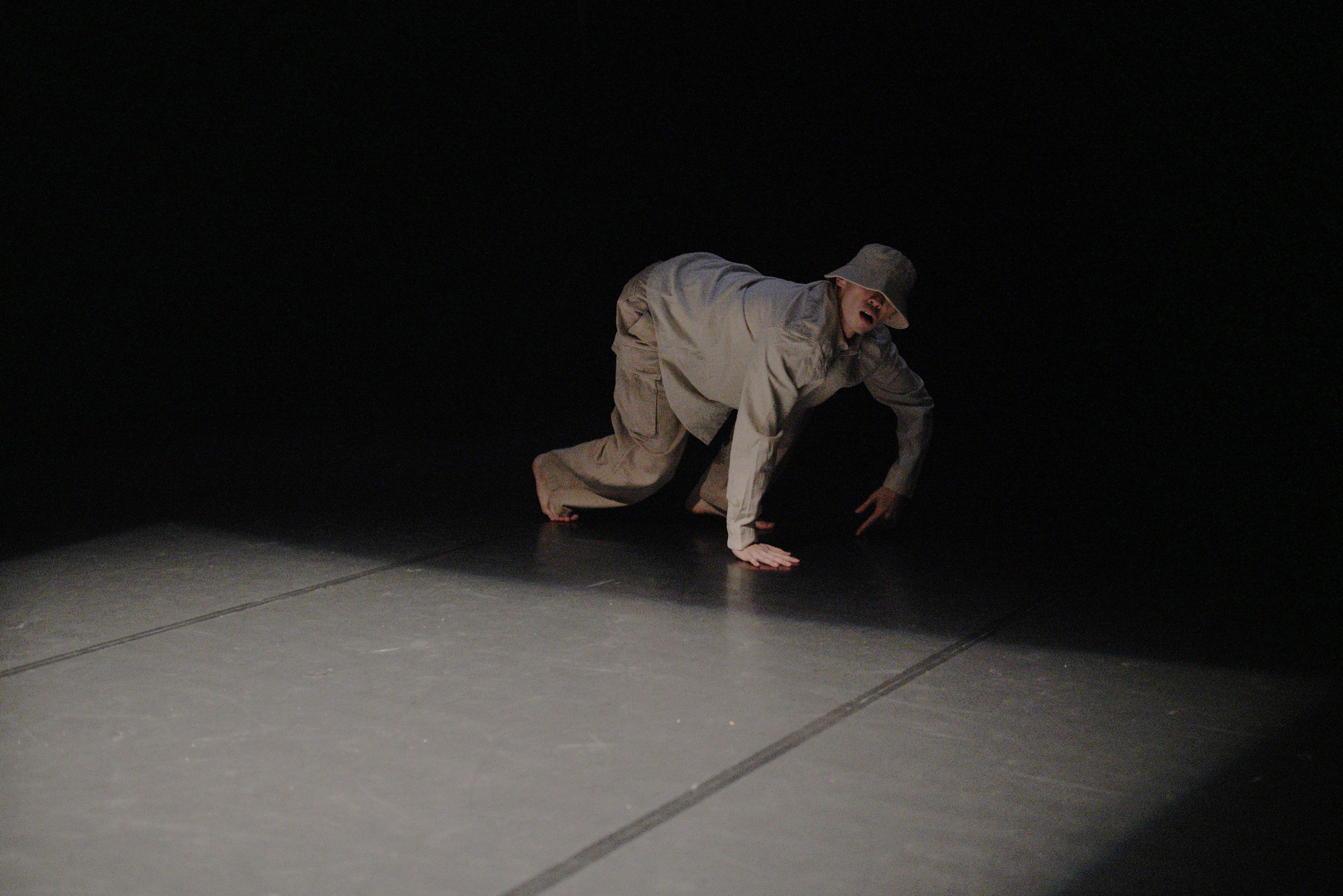
Choreographer & Performer: Seung Hwan Lee
Venue: Theater Felina Mannheim
This work embodies the world through a child's eyes — a place of endless curiosity, fearless play, and unfiltered emotions. Through spontaneous gestures, sudden changes of rhythm, and moments of wonder, the dancer channels the raw honesty and innocence that children carry naturally.
The performance invites the audience to step back into a state where joy comes without reason, sadness is expressed without hesitation, and every movement is a discovery. Between fragility and boundless energy, Like a Child reminds us of the purity we once knew — and asks what remains of it in us now.
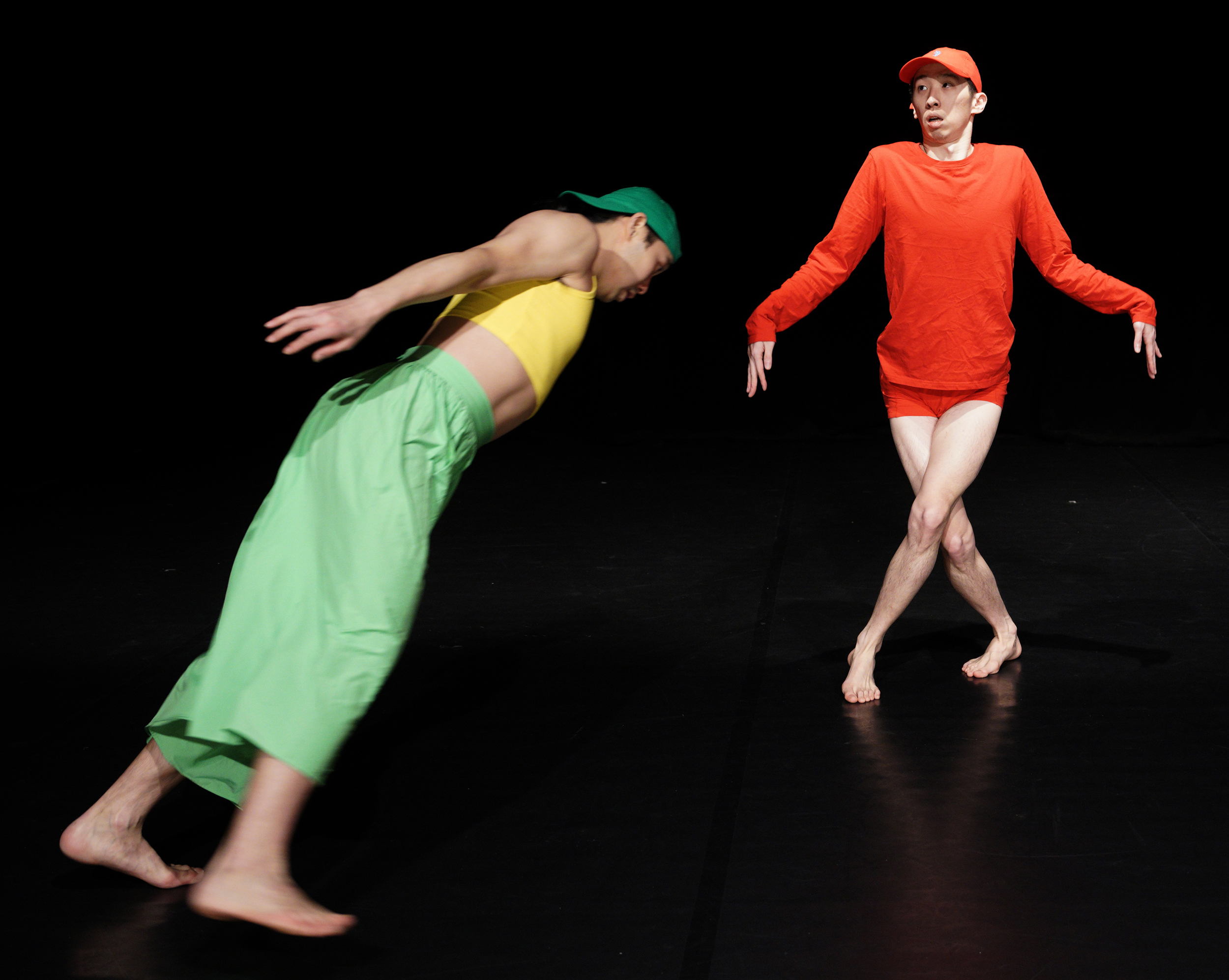

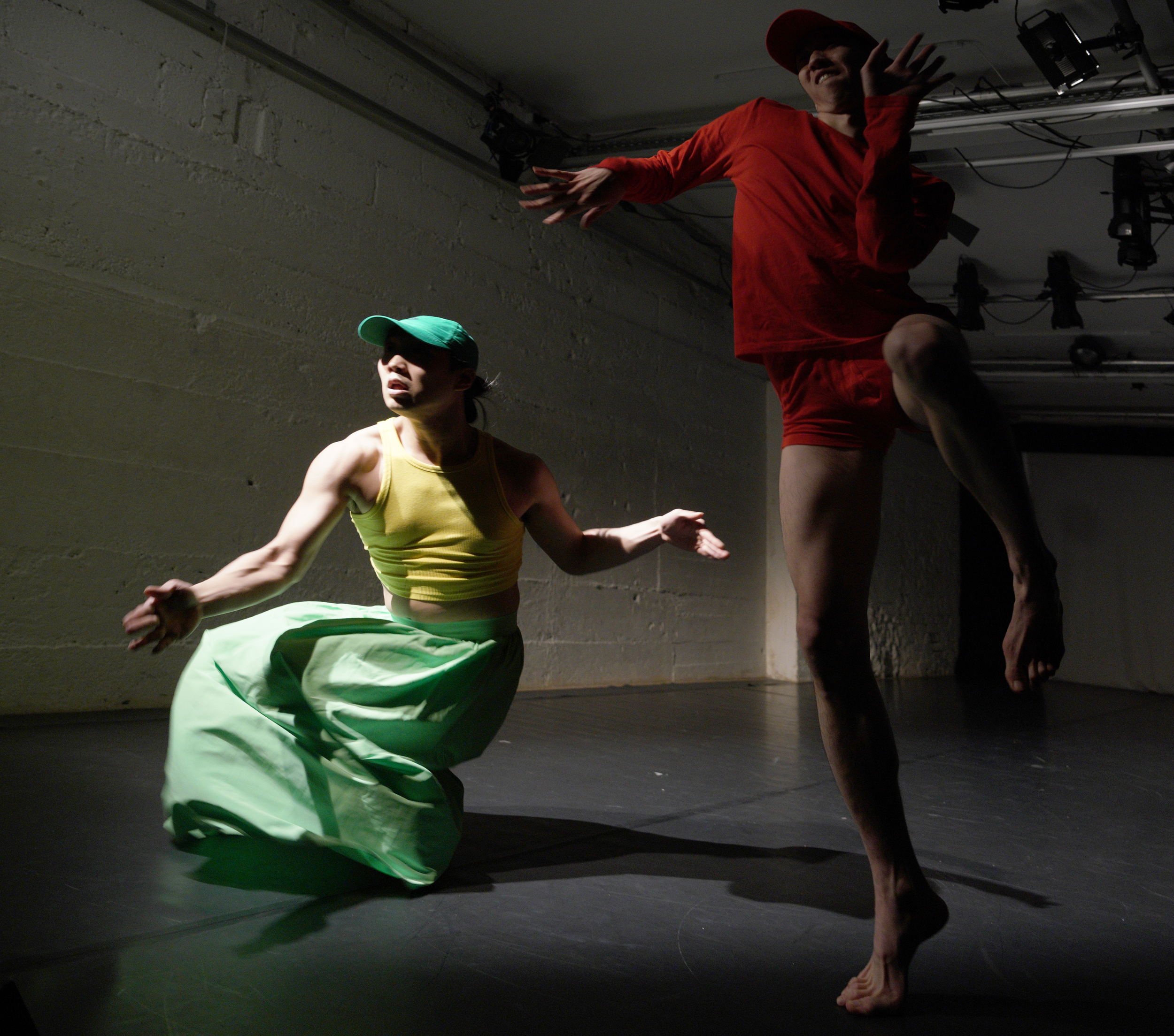
Choreographer: Seung Hwan Lee
Performer: Seung Hwan Lee, Woo Sang Jeon
Venue: Theater Felina Mannheim
Description to be added later

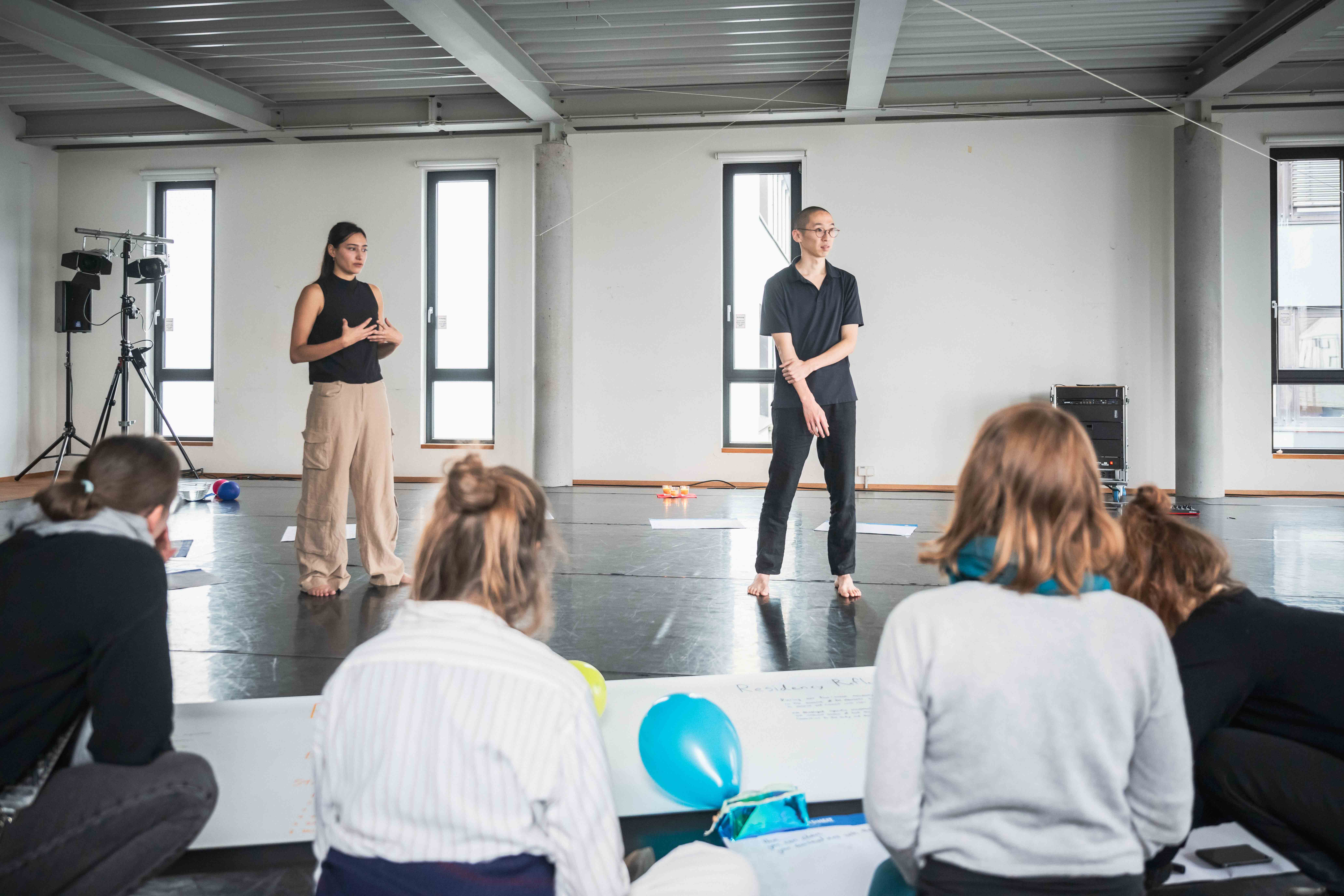

Performer & Residency Participations: Seung Hwan Lee, Malika Ali
Concept & Idea: Malika Ali
Residency: Fo(u)r exchange residency Freiburg
Venue: SÜDUFER Freiburg
South Korea . Male . 1991 . Mannheim Germany
K-ARTS SEOUL KOREA — BACHELOR, 2015
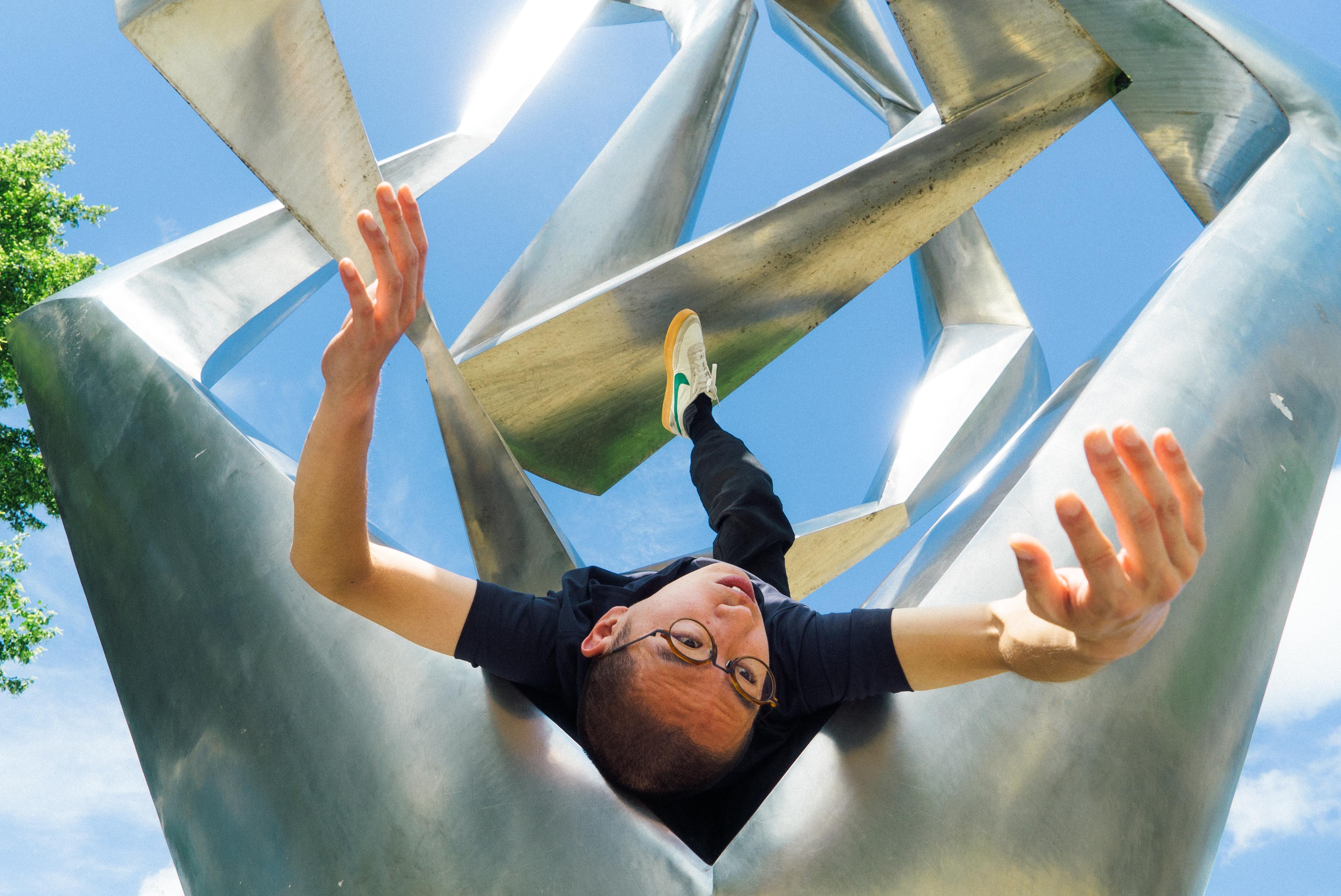

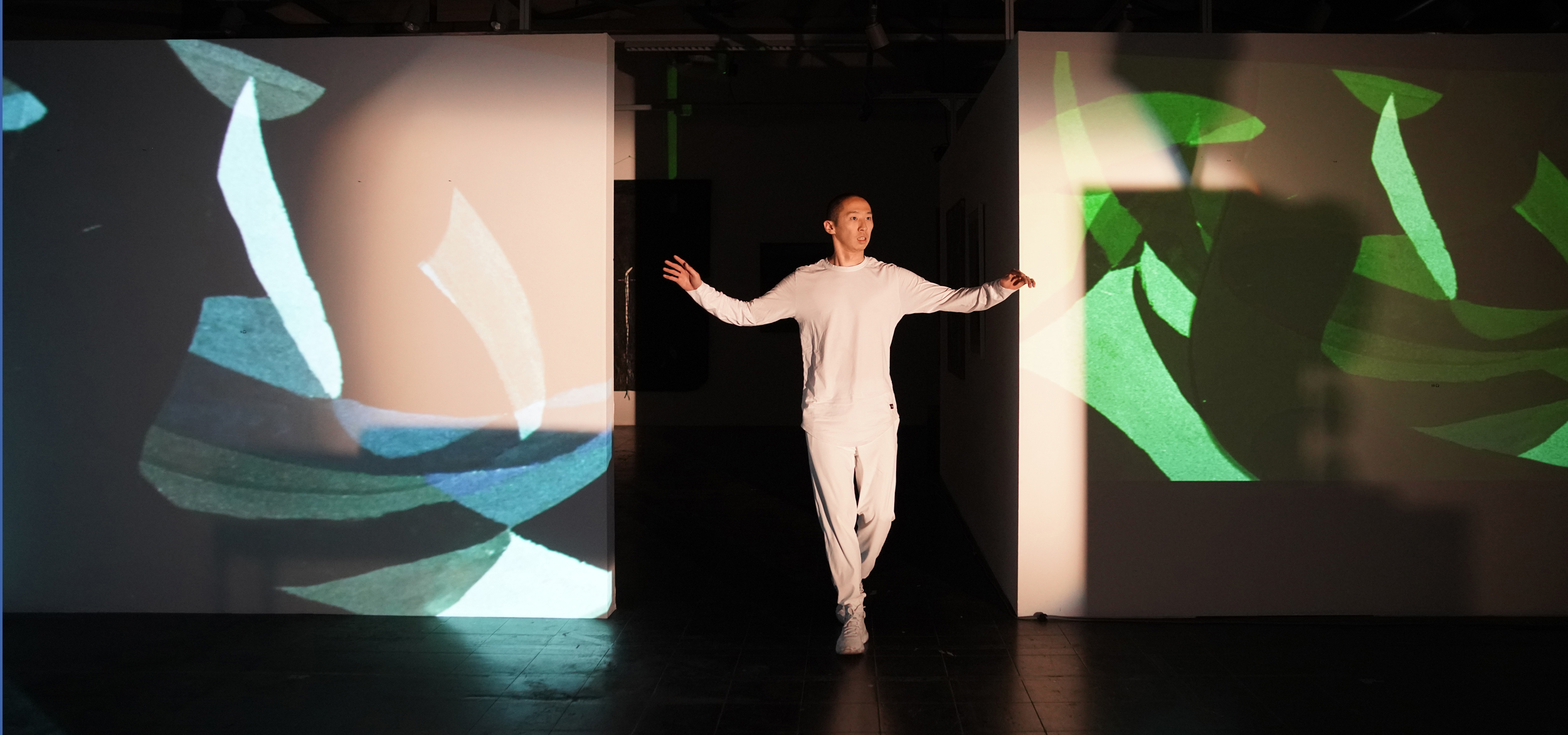
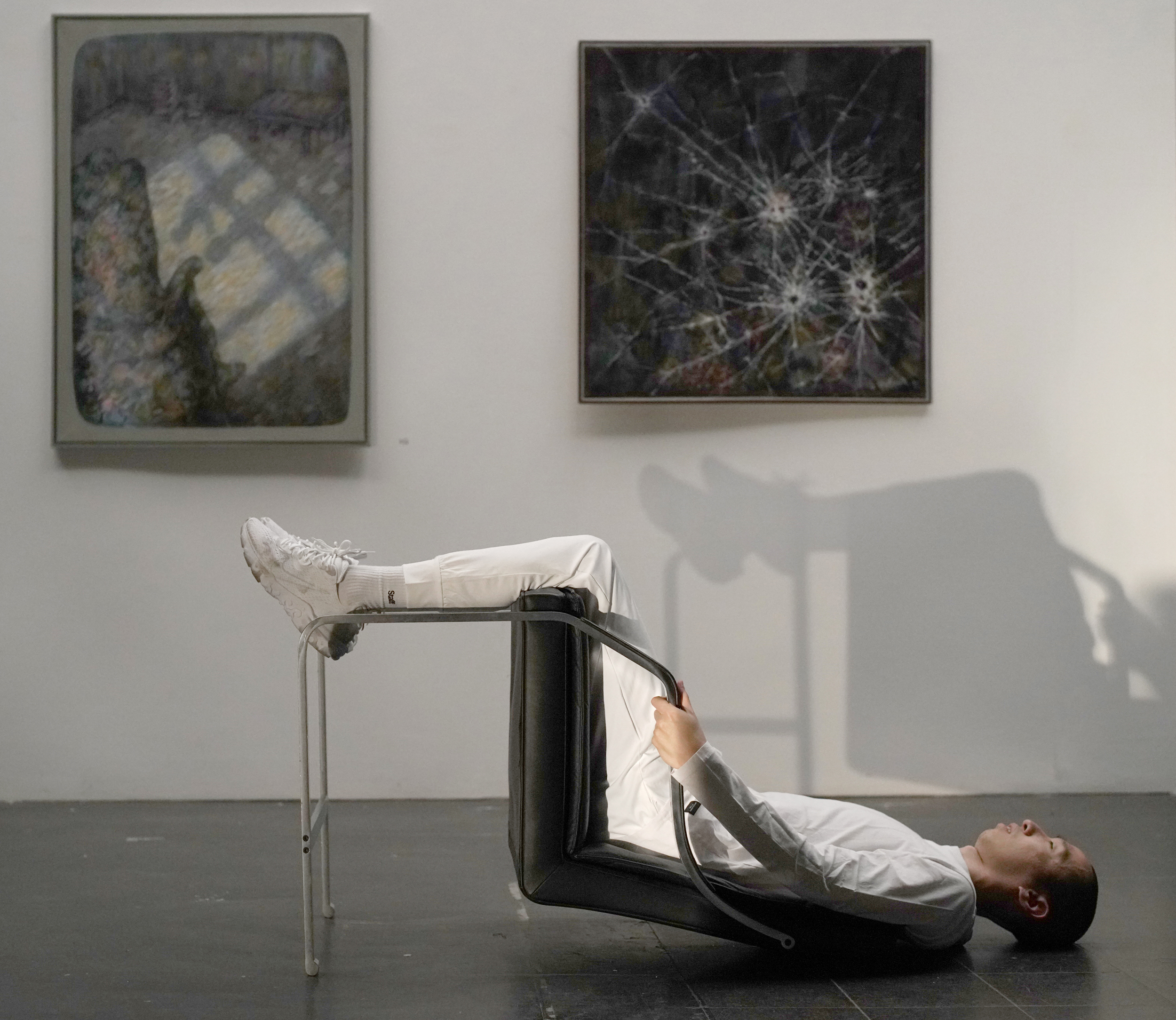

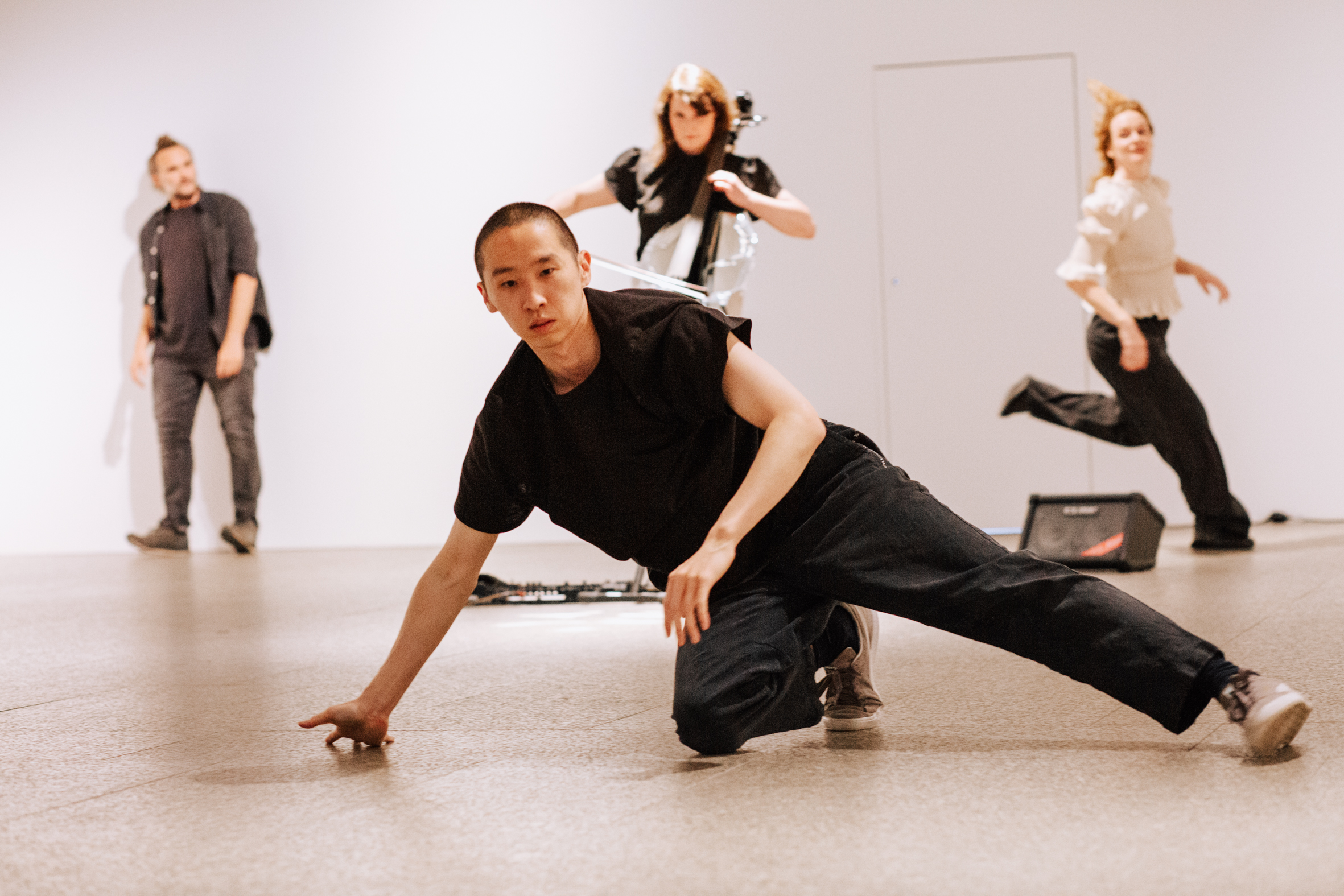
This project explores the relationship between movement qualities and sound through the creation of original music compositions. Each composition was developed in response to specific movement qualities, serving both as inspiration and as a practical training tool for dancers. By aligning sound with the textures, dynamics, and energies of physical expression, the project aims to enhance training effectiveness and deepen the connection between music and dance.
The research was supported by the DIS-TANZ-SOLO funding program and focused on how tailored music can guide, challenge, and expand a dancer's approach to improvisation and movement research. Through this process, the project highlights the potential of sound not only as accompaniment but as an integral partner in the development of movement vocabulary and artistic practice.
Project Lead: Seung Hwan Lee
Research Support: DIS-TANZ-SOLO funding program
Focus: Movement quality and sound relationship, dance training enhancement
Description to be added later

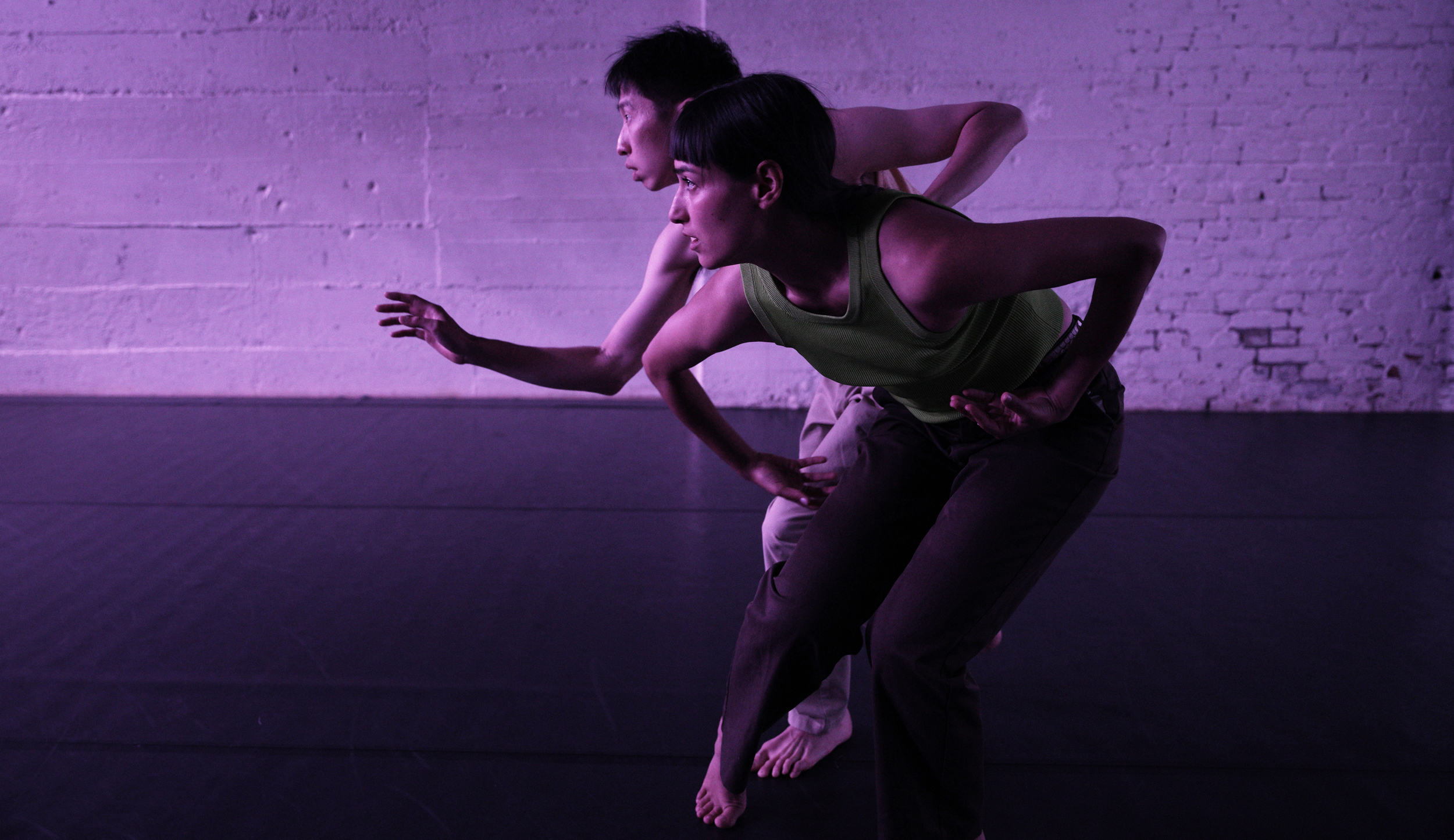
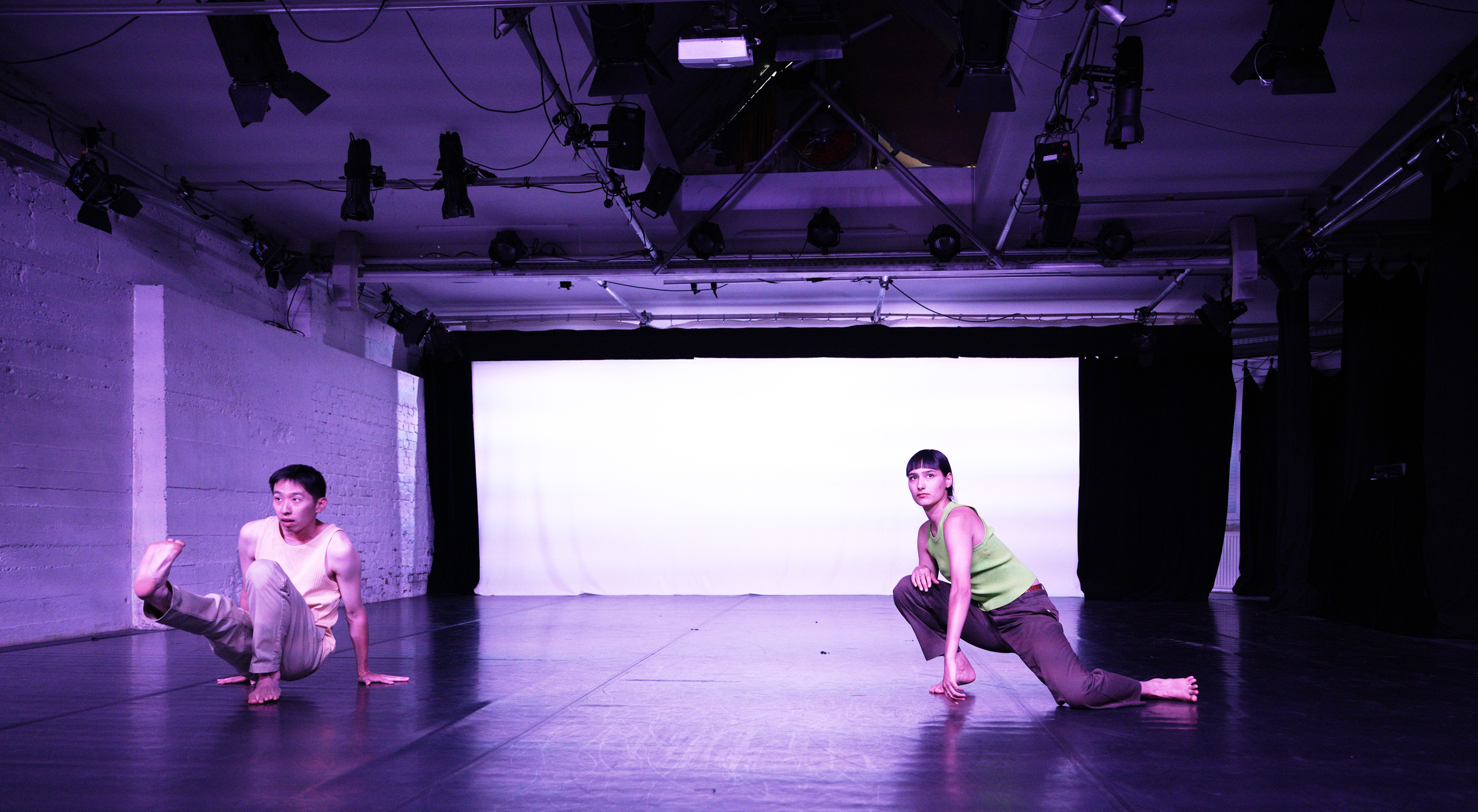
Choreographer & Performer: Seung Hwan Lee, Malika Ali
Venue: Theater Felina Mannheim
Masturpiece : Major Tom began with a small laugh at the way things get wrapped in the word "art." We live in a time where almost anything can become art, where anyone can call themselves an artist. Inside that reality I often feel split. Am I actually making something, or just showing the appearance of making?
The work grows out of that tension. It begins without declaration, and carries no clear story. On stage there is a pair of shoes, a folded piece of clothing, and a body that appears and disappears. It seems to suggest meaning, but whether that meaning is necessary remains uncertain. We look at such moments and search for depth, or maybe we just want to believe it is there.
We say it is for the audience. We say it carries a message. But sometimes it is nothing more than a well-dressed ego. And even that can still be called art.
The title borrows from David Bowie's Space Oddity. Major Tom drifts in space, cut off from ground control, suspended in a kind of quiet disconnection. The song enters the piece only briefly, not to push a story but to pass through, almost like background noise, like a signal sent but never received.
Masturpiece floats in that same space between sincerity and irony. It holds something genuine, but doubts that very sincerity. It wants to be seen, yet fears there may be nothing to show. That contradiction is what remains.
It is less a statement than a confession. Not laughter from the outside, but from within. The body folds, it pauses, it questions.
It is a performance, yes, but also a self-portrait. Perhaps it is art. Or perhaps only a very quiet monologue.

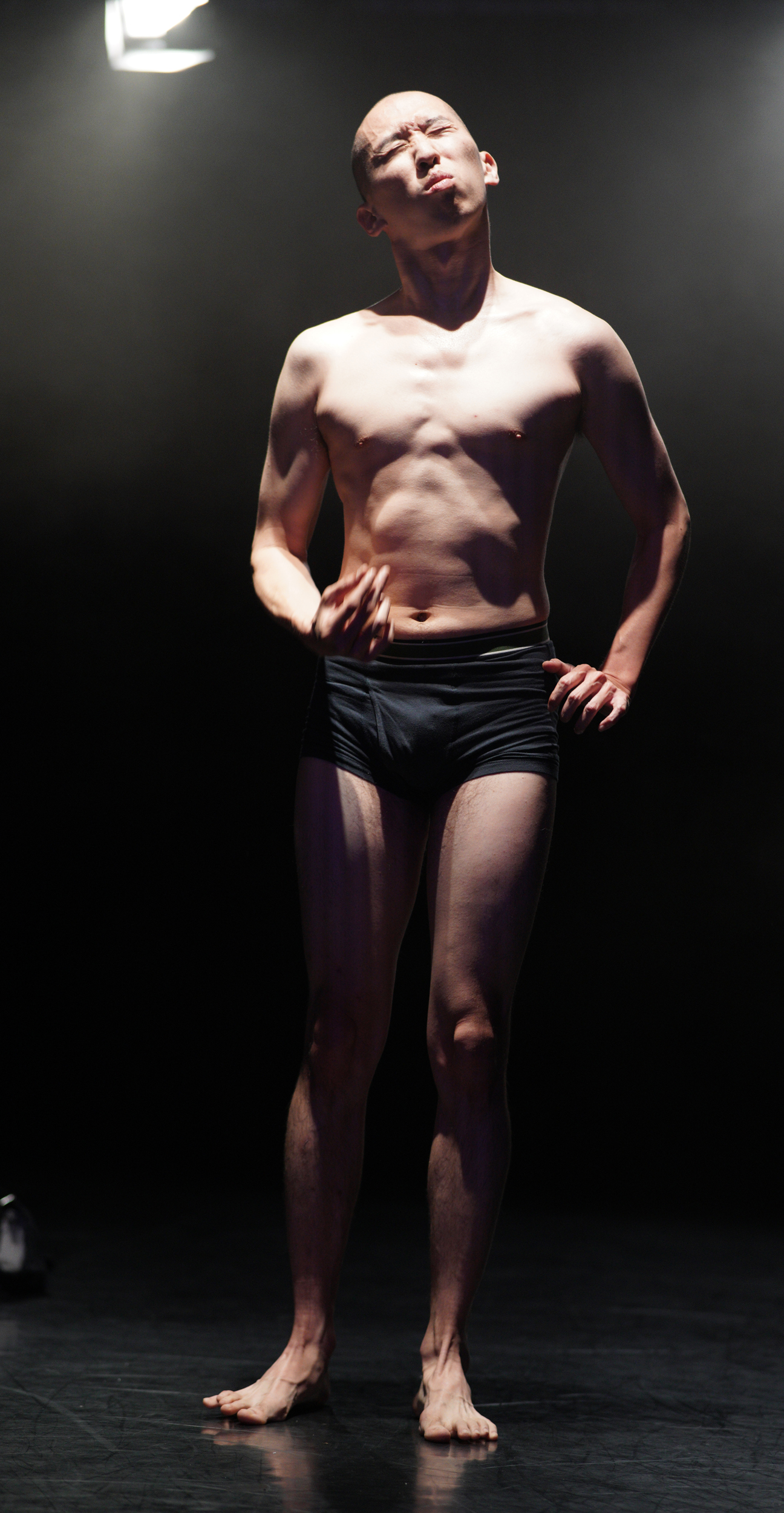


Choreographer & Performer: Seung Hwan Lee
Photography: Günter Krämer
Based in Germany, working internationally.
Available for performances, collaborations, residencies, teaching opportunities, and new choreographic projects.